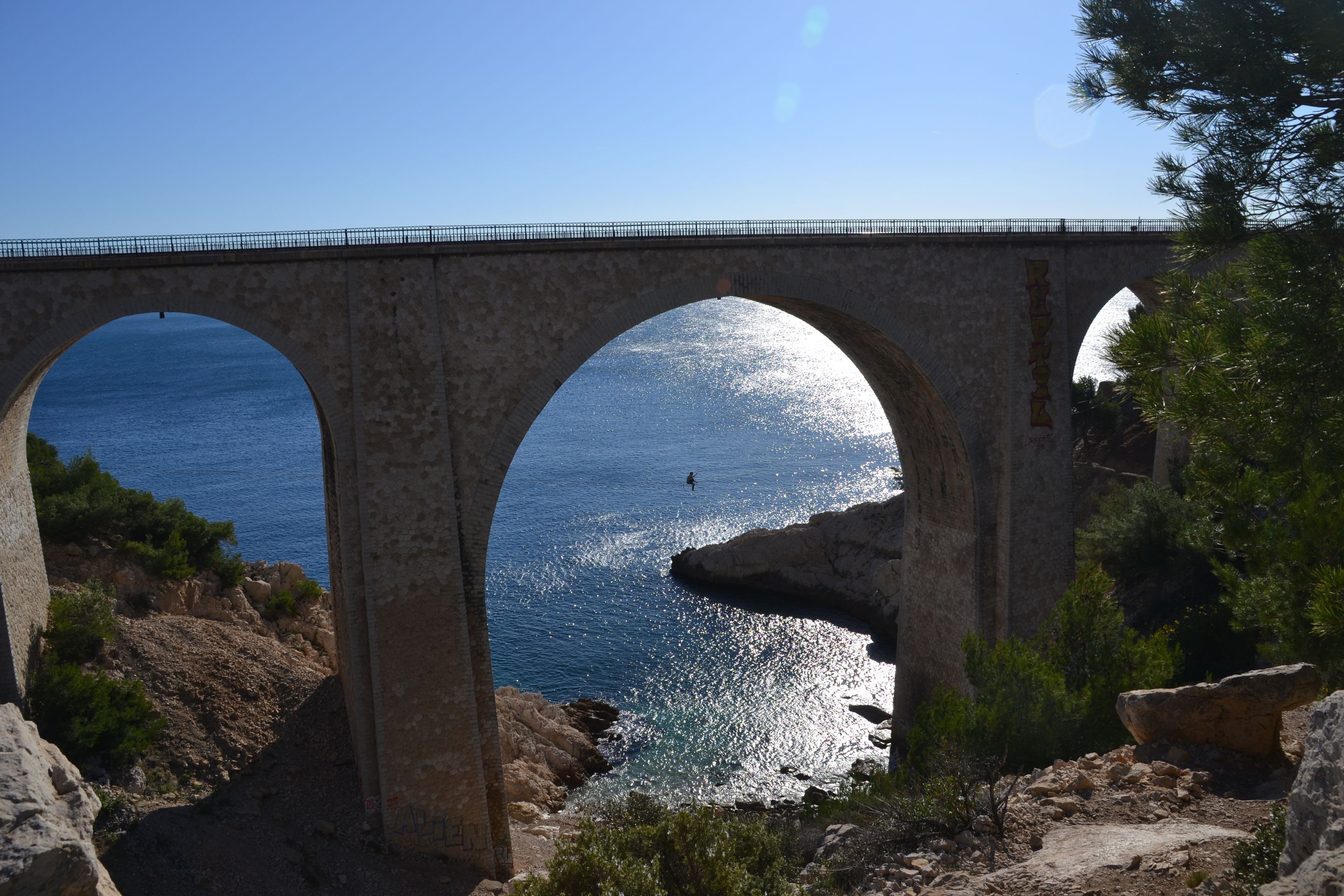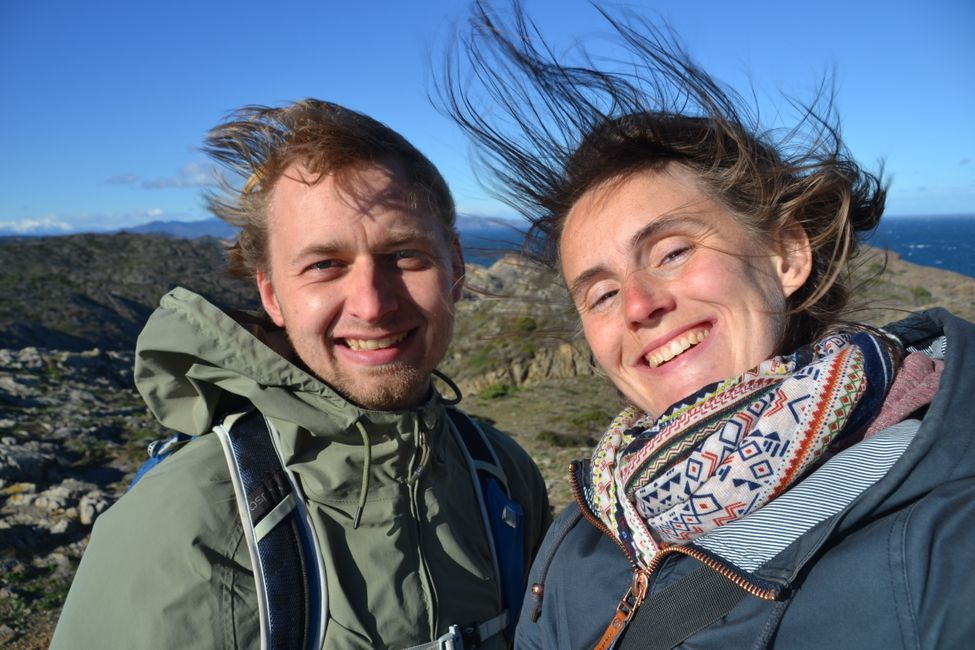#115 The Floating Monasteries of Meteora
Rakabudiswa: 30.04.2022
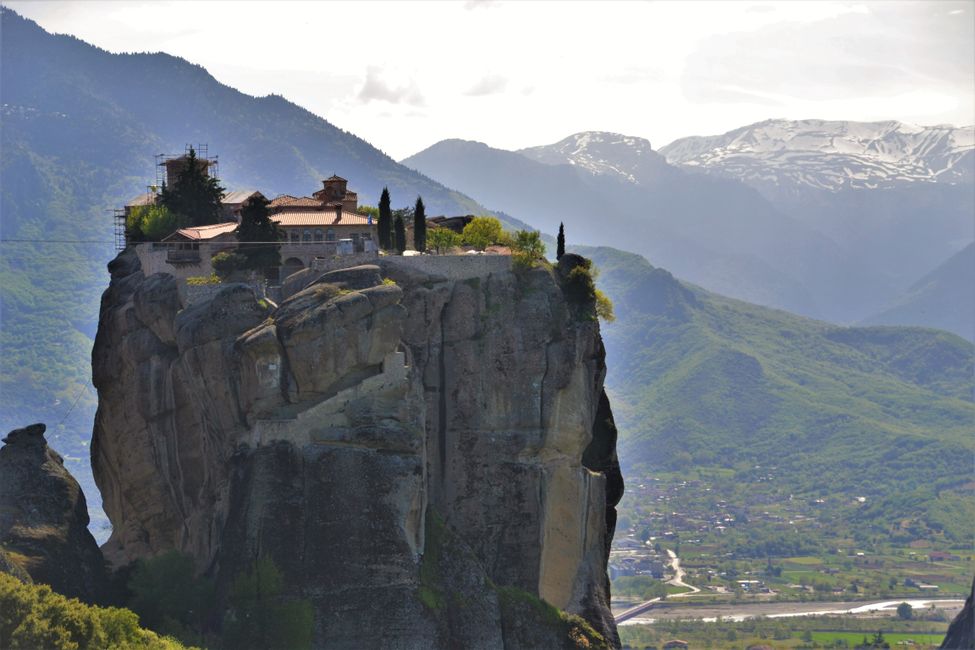
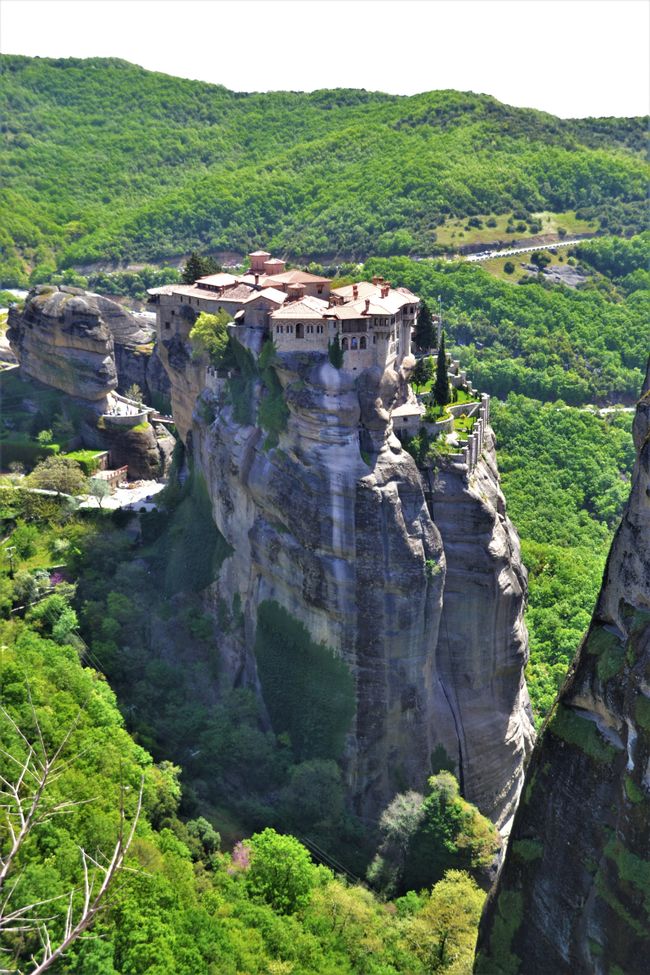
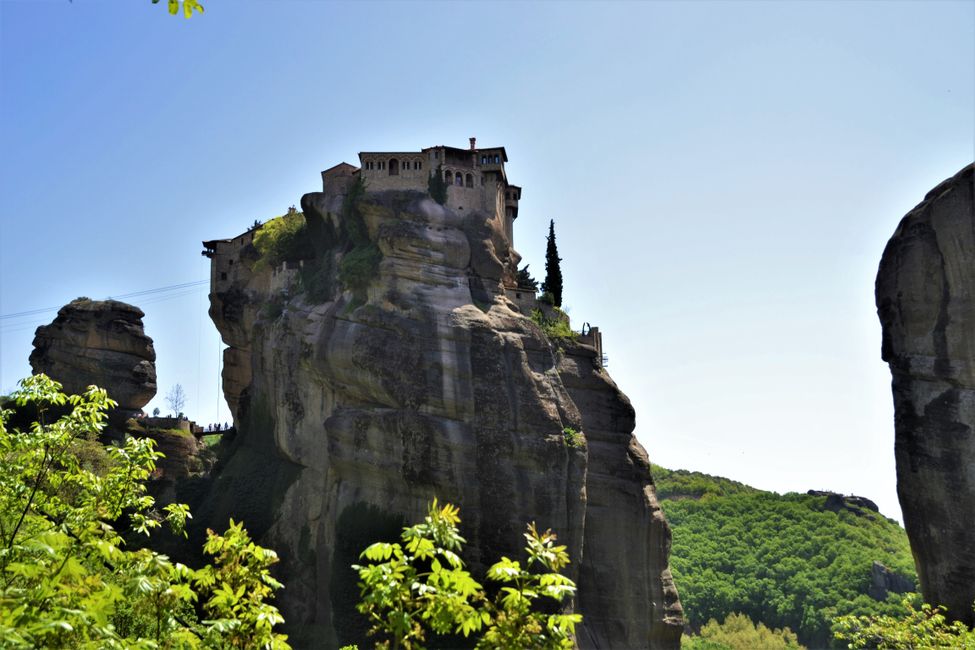
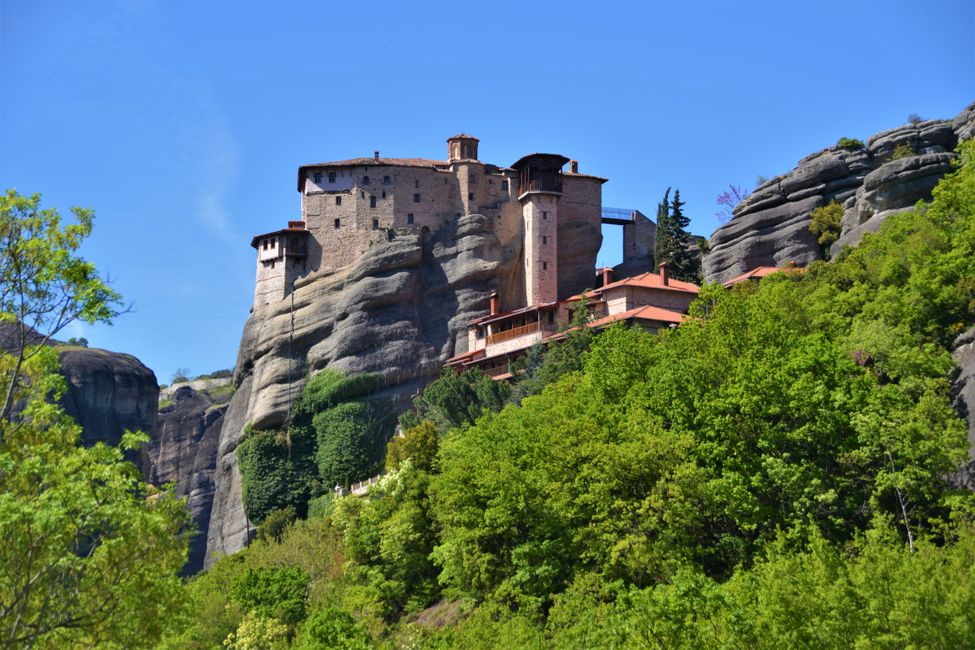
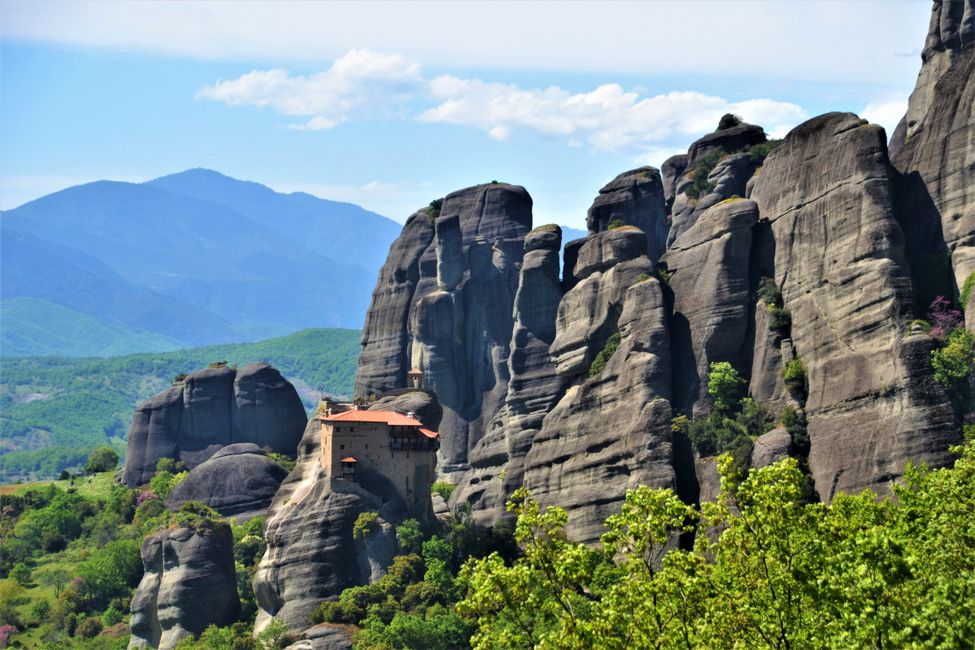
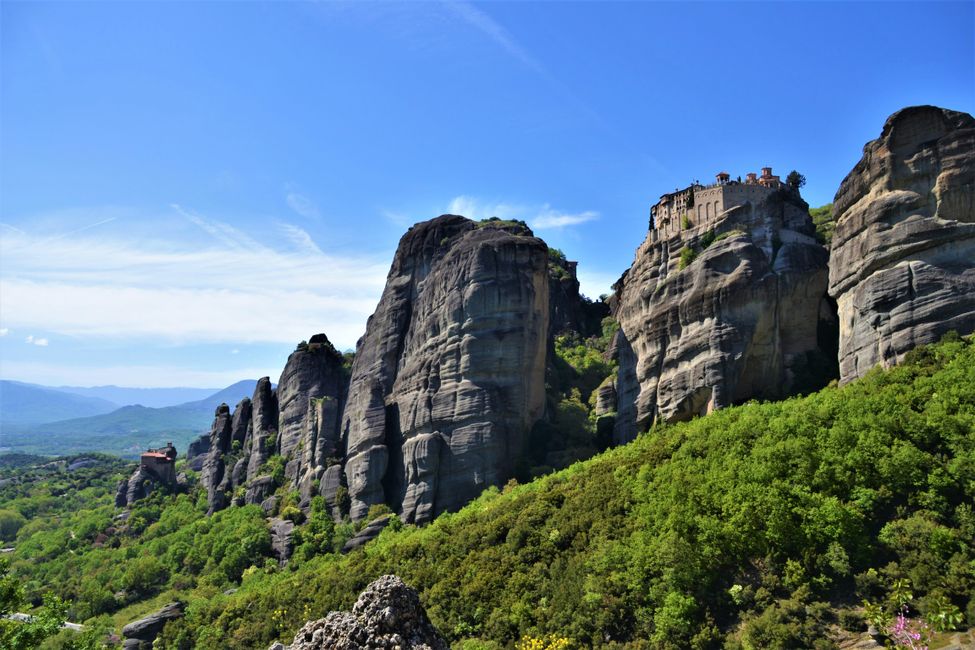
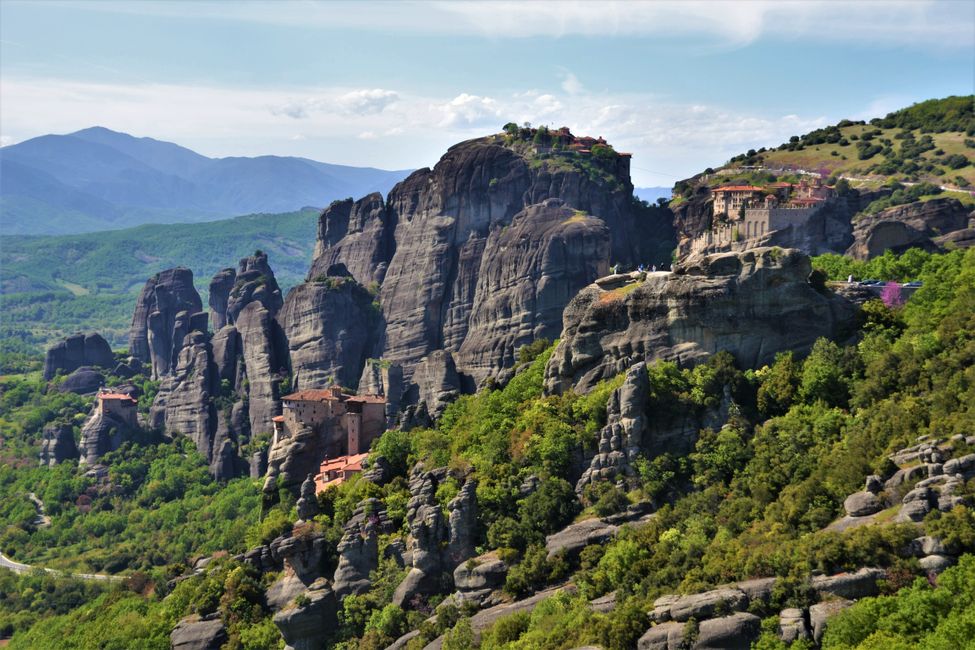
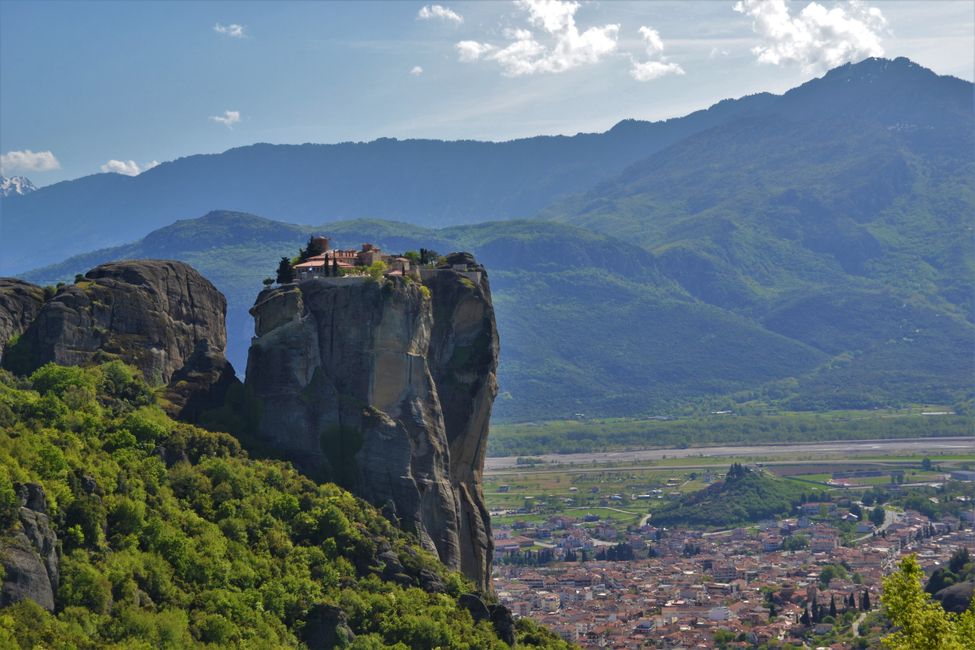
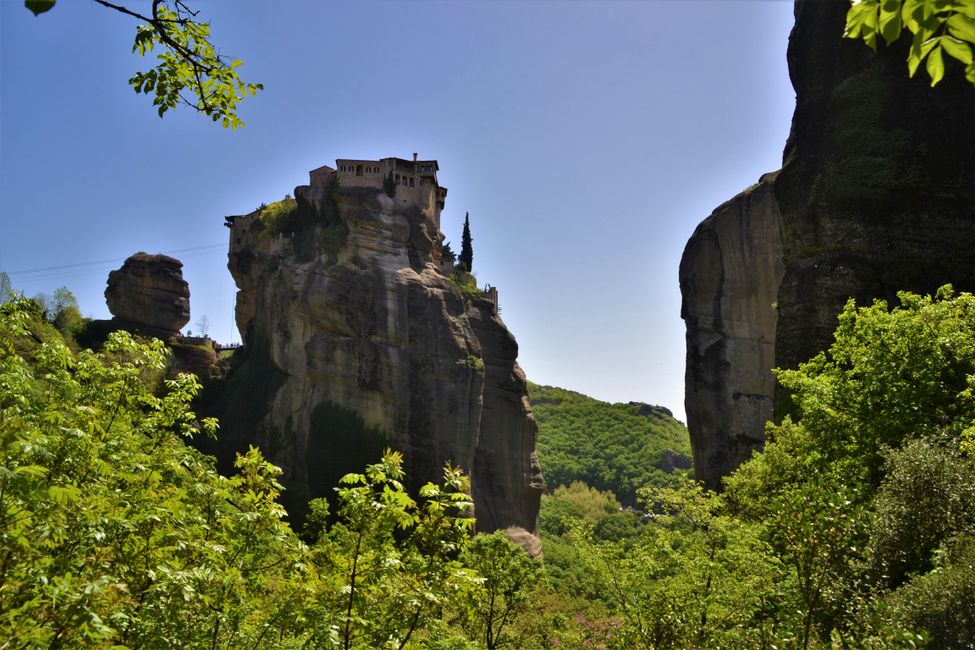
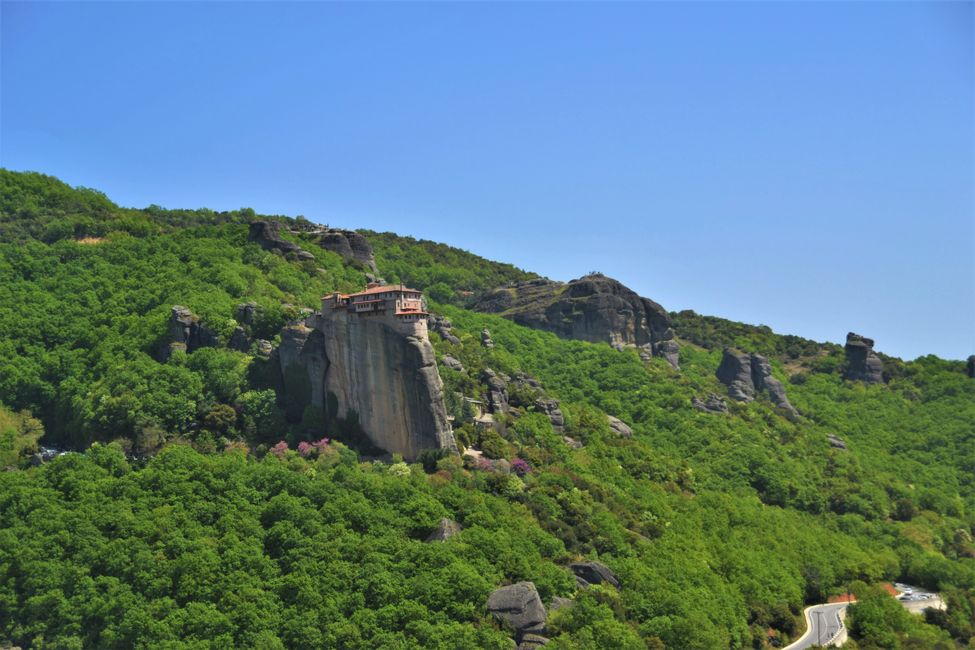
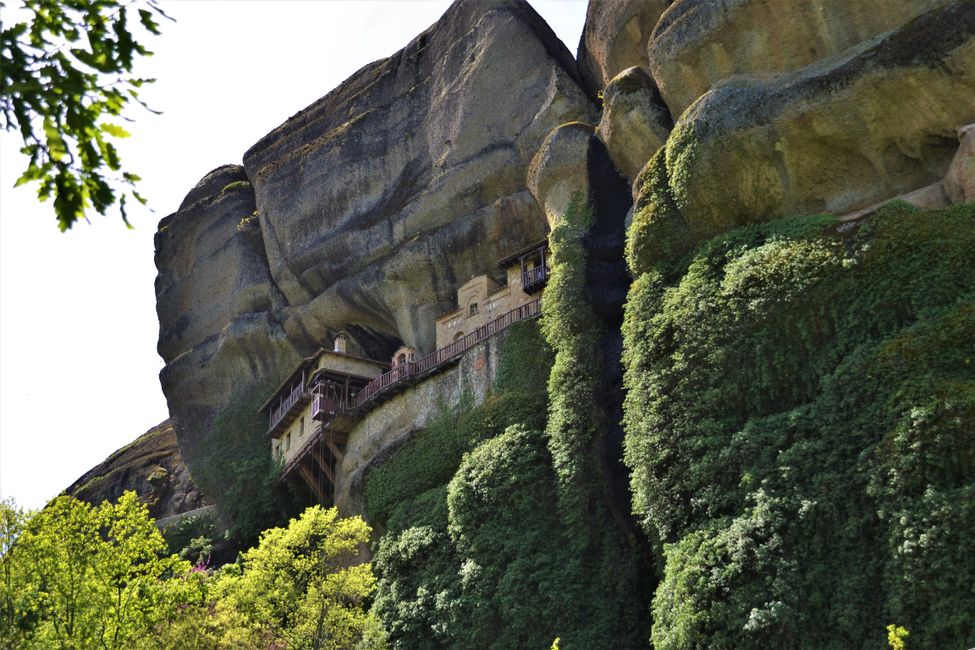
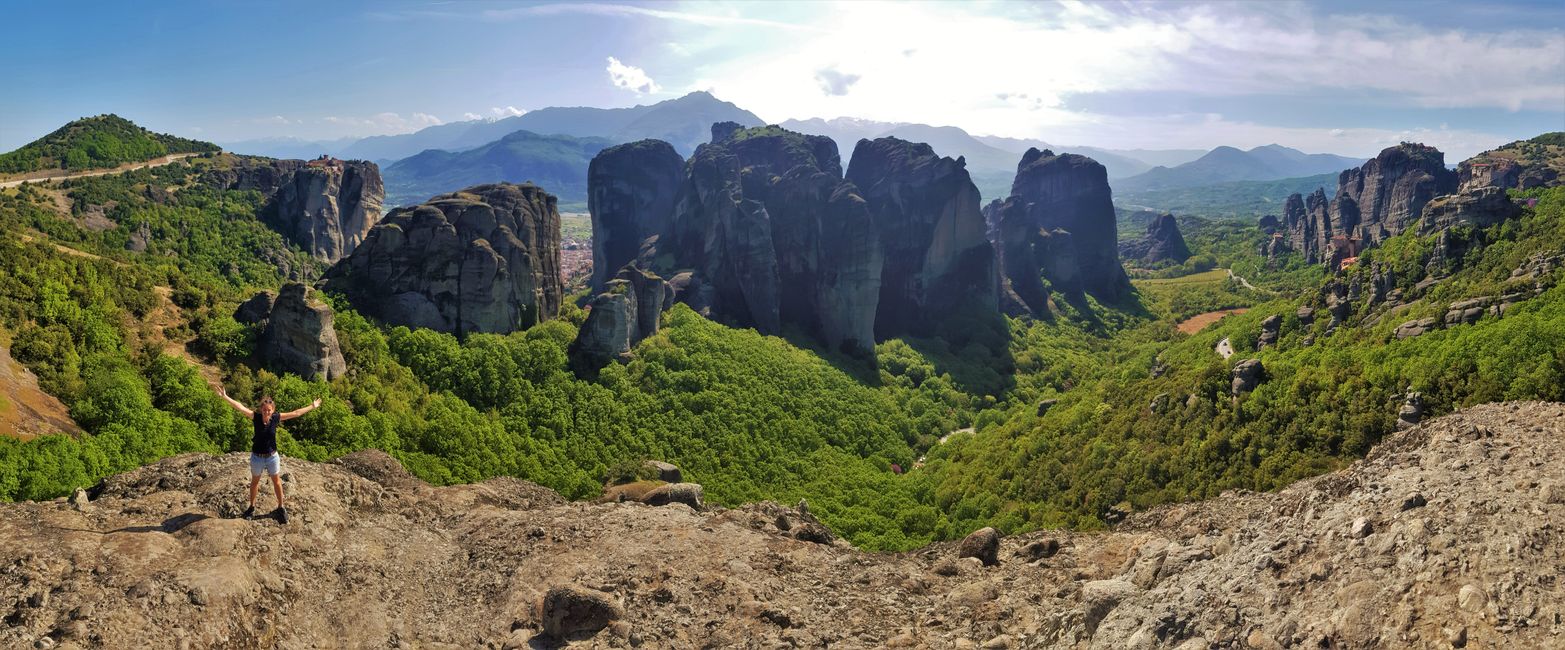
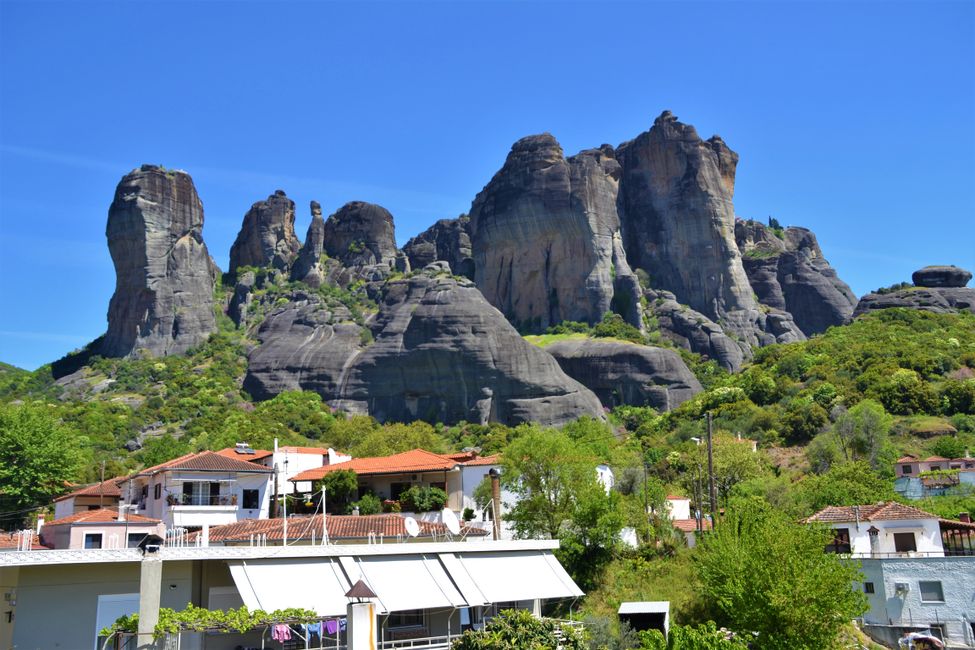
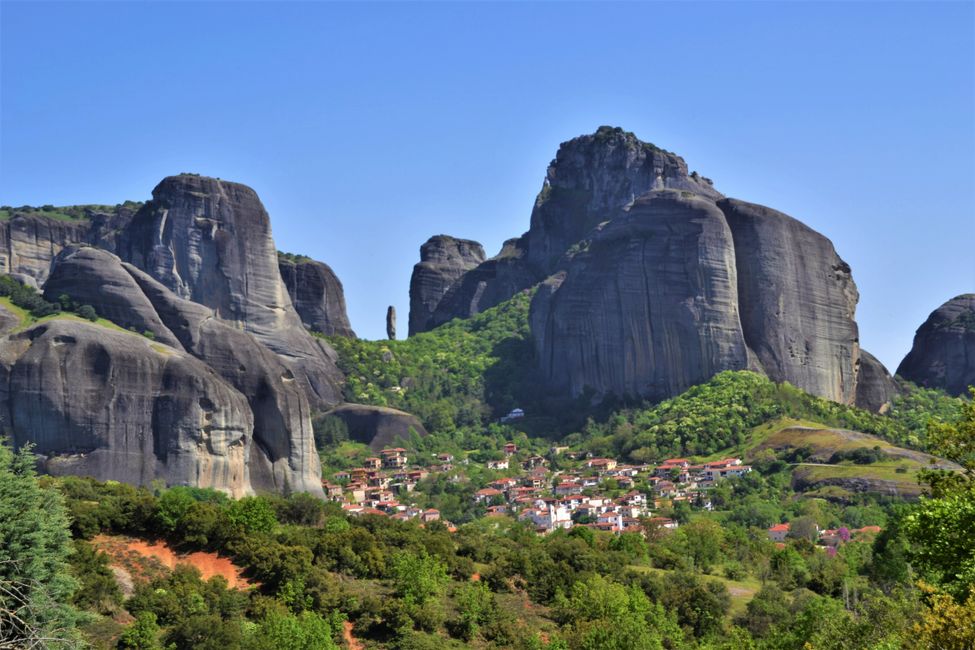
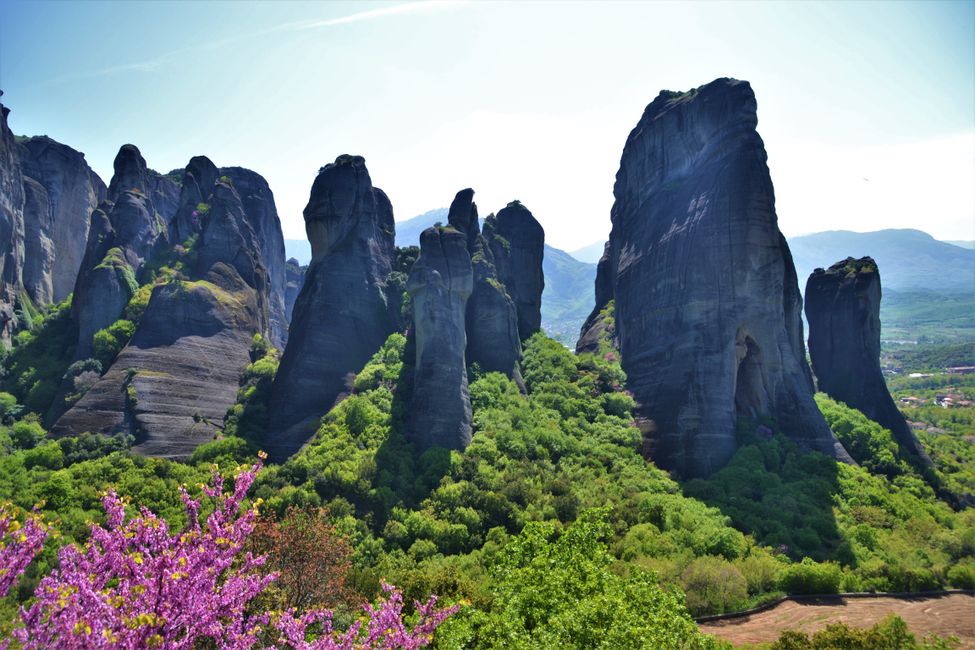
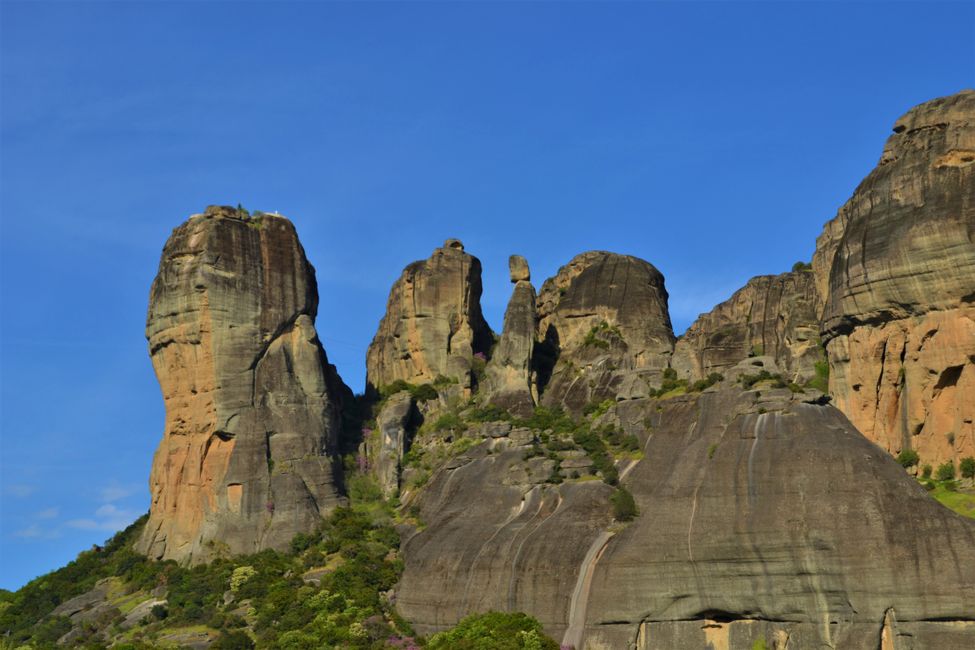
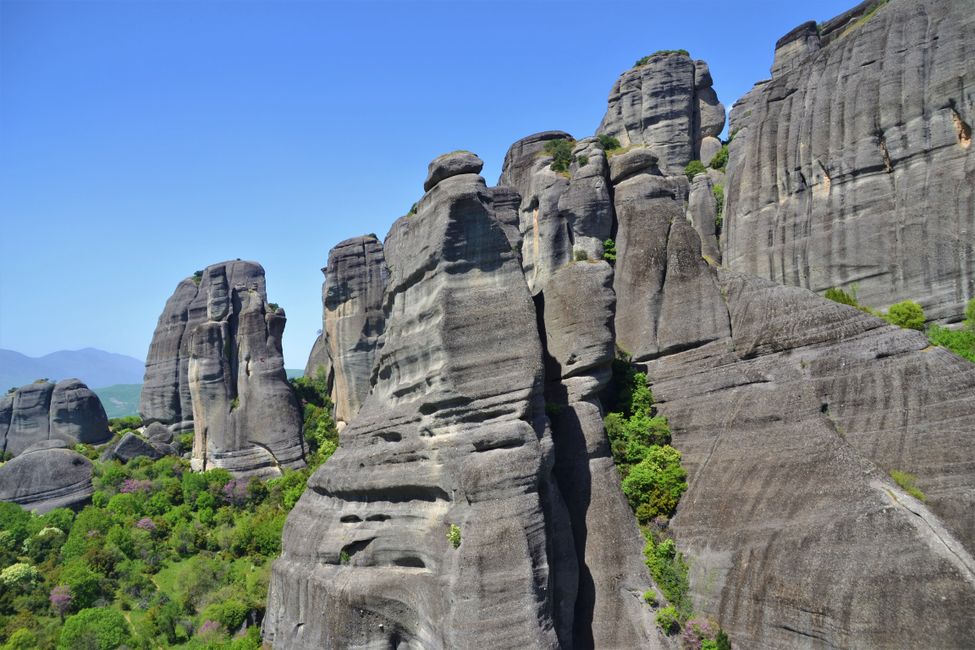
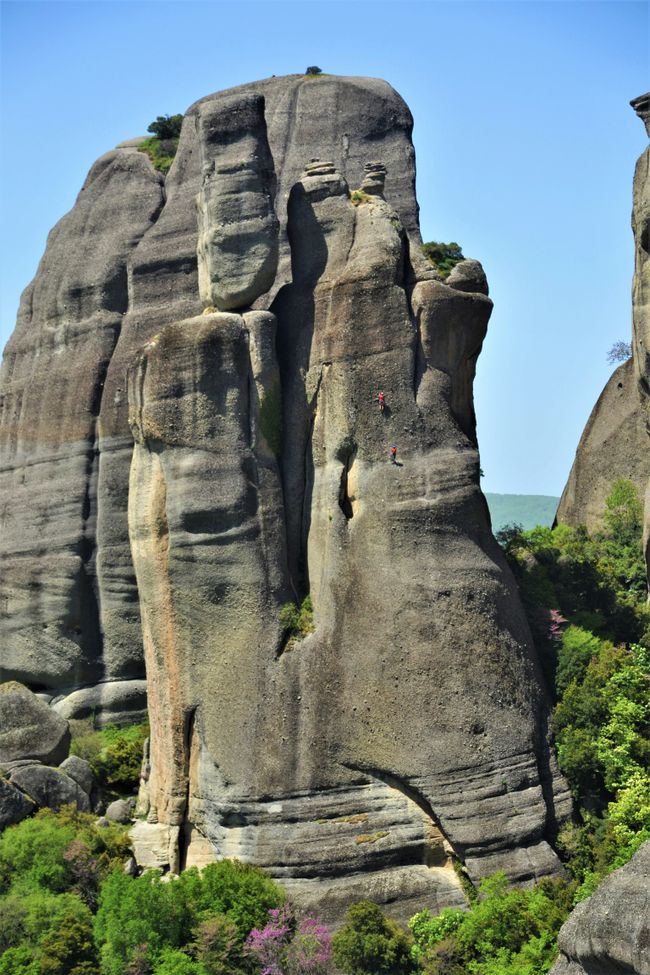
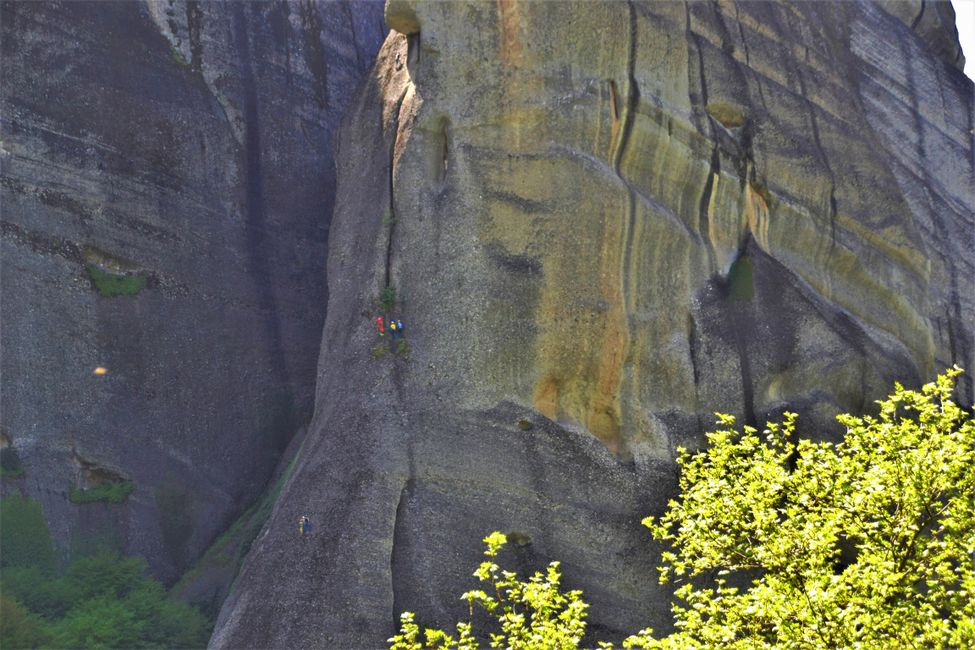
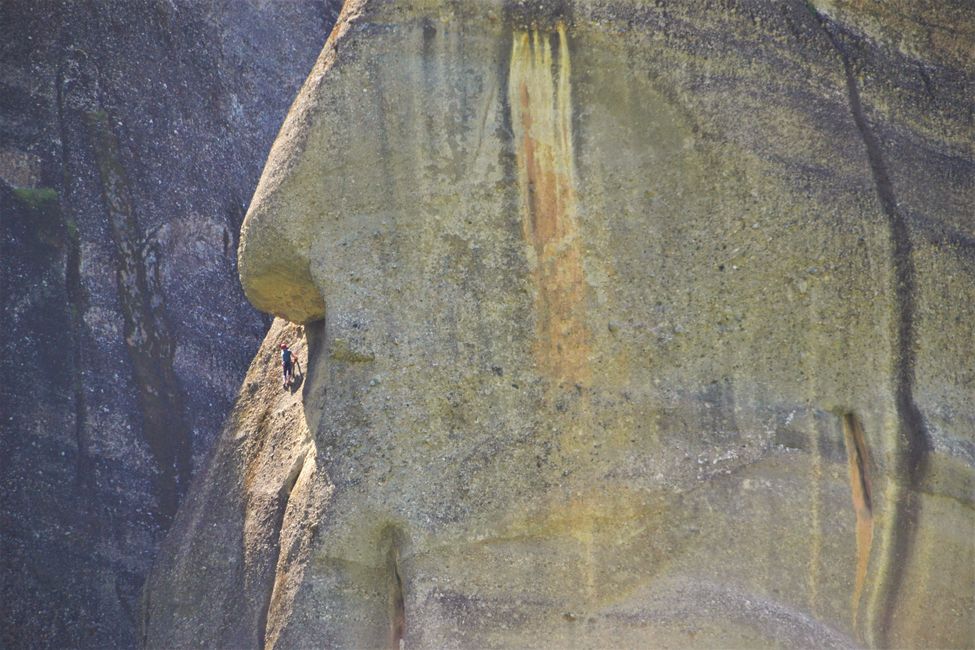
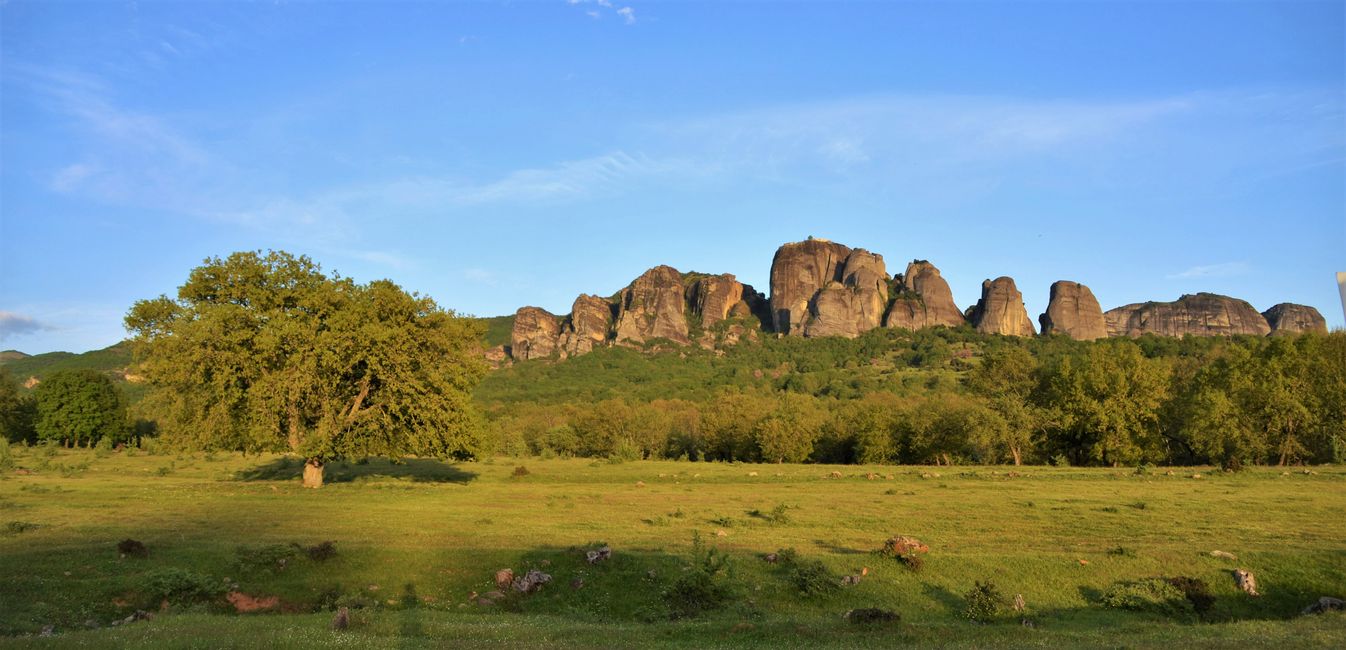
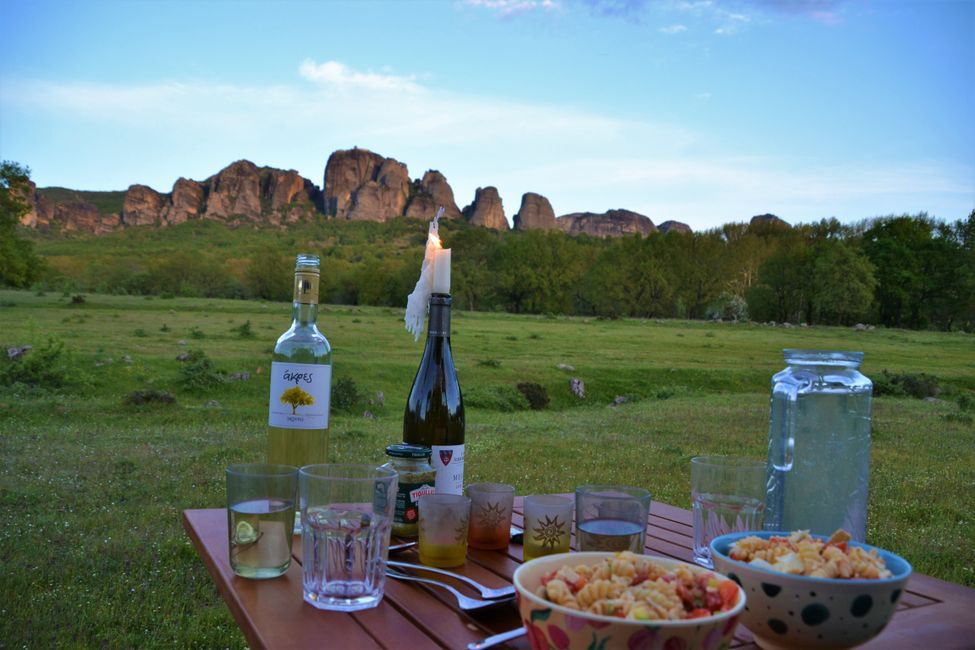

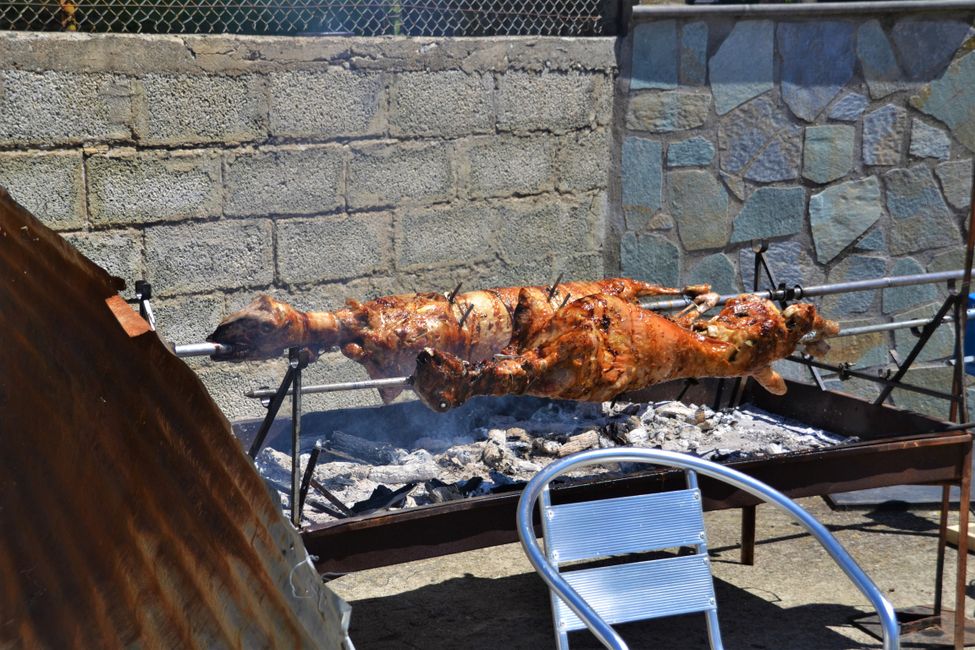
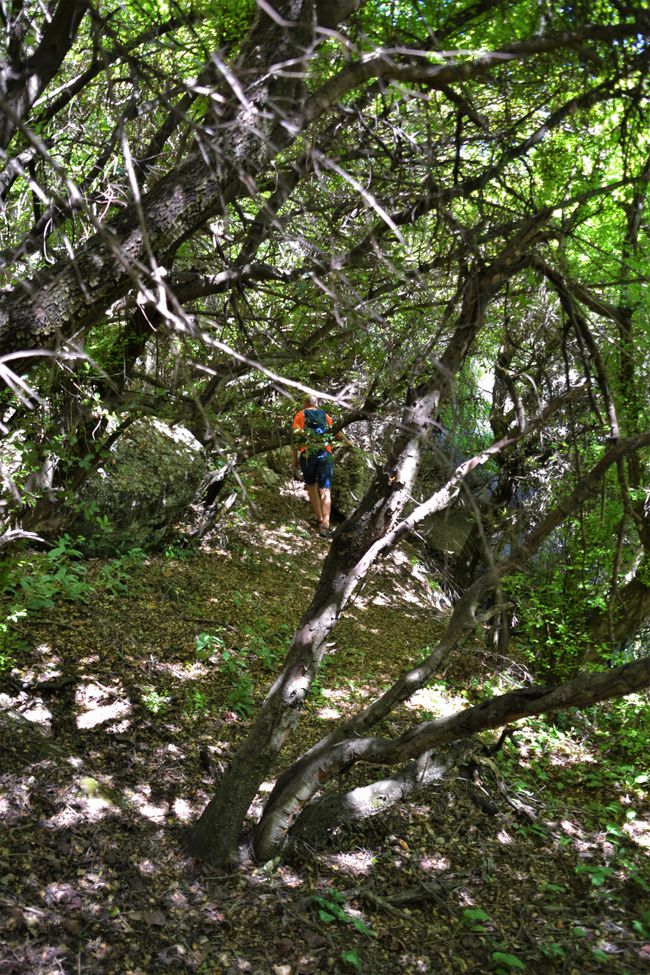
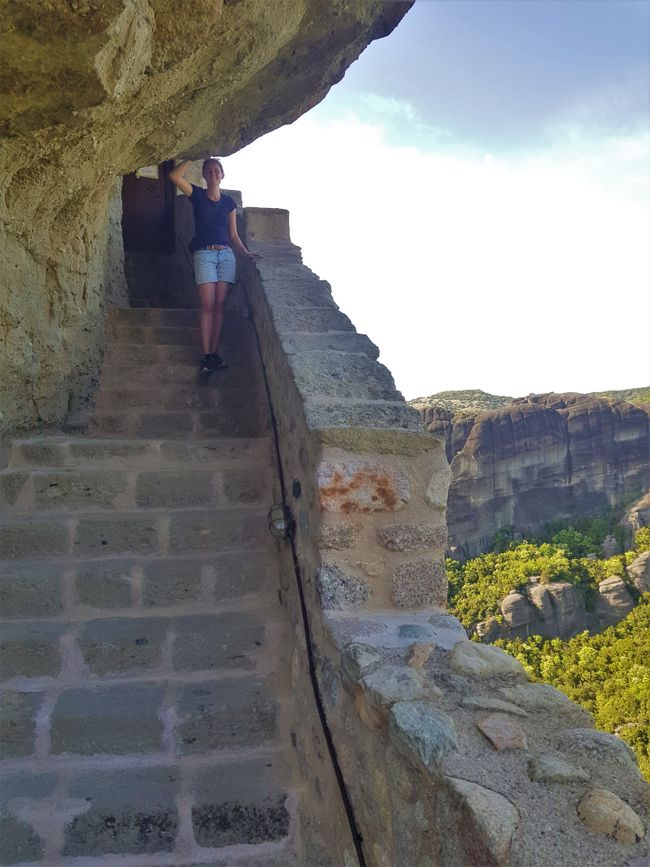
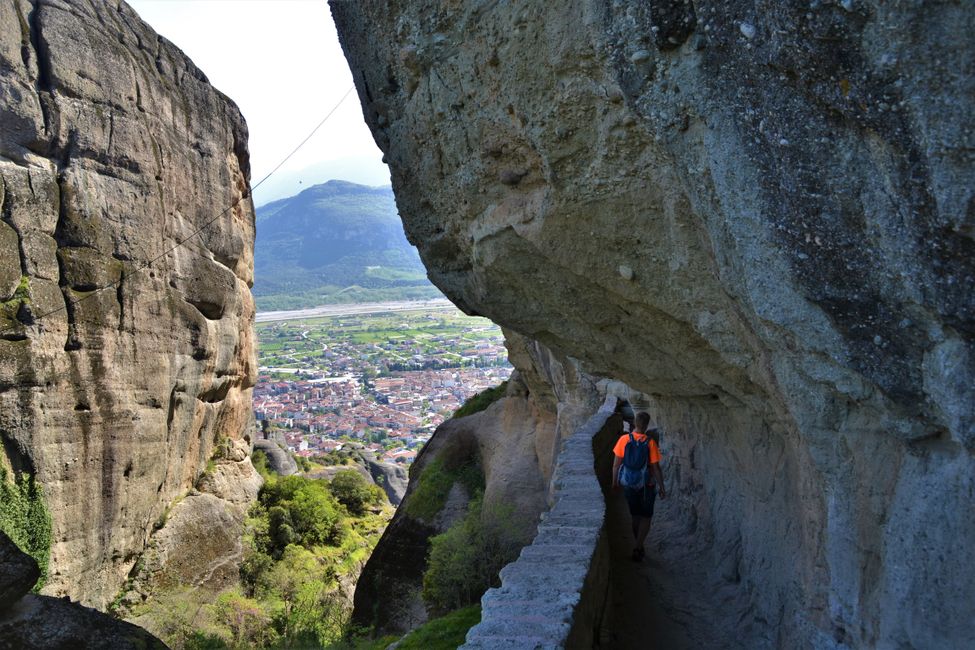
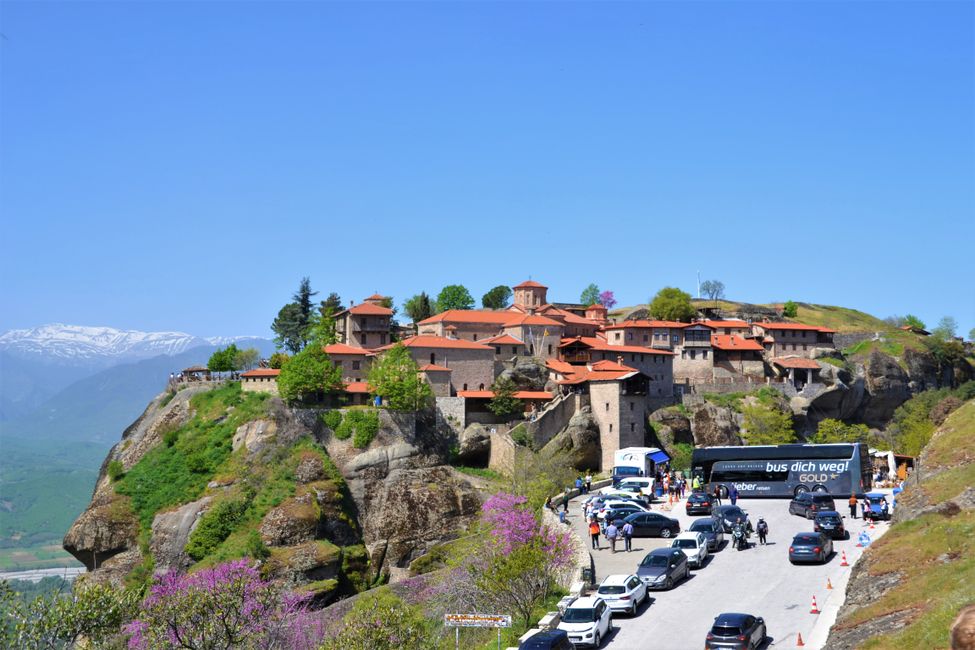
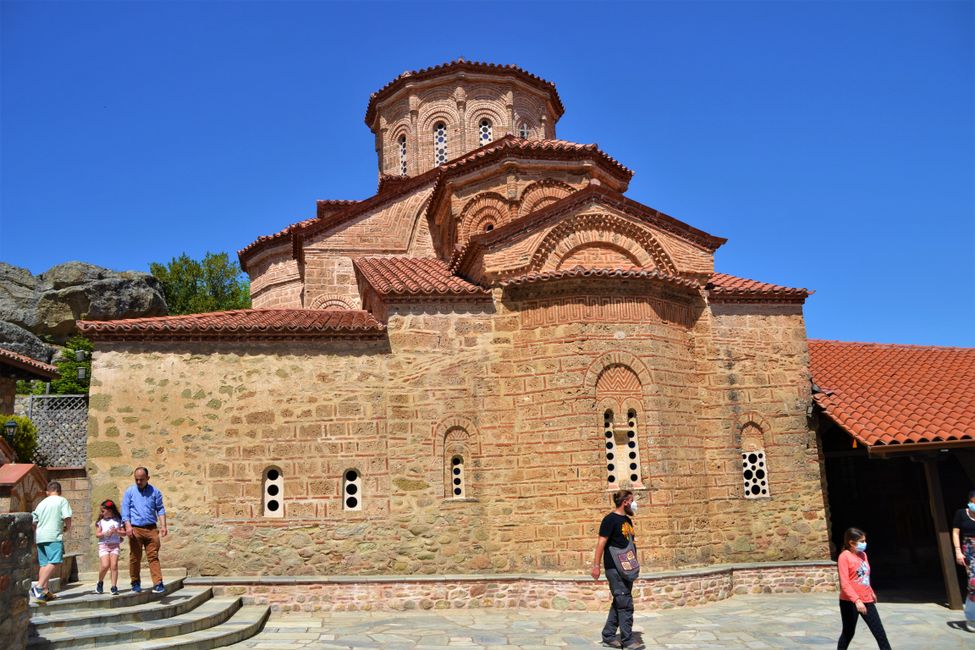
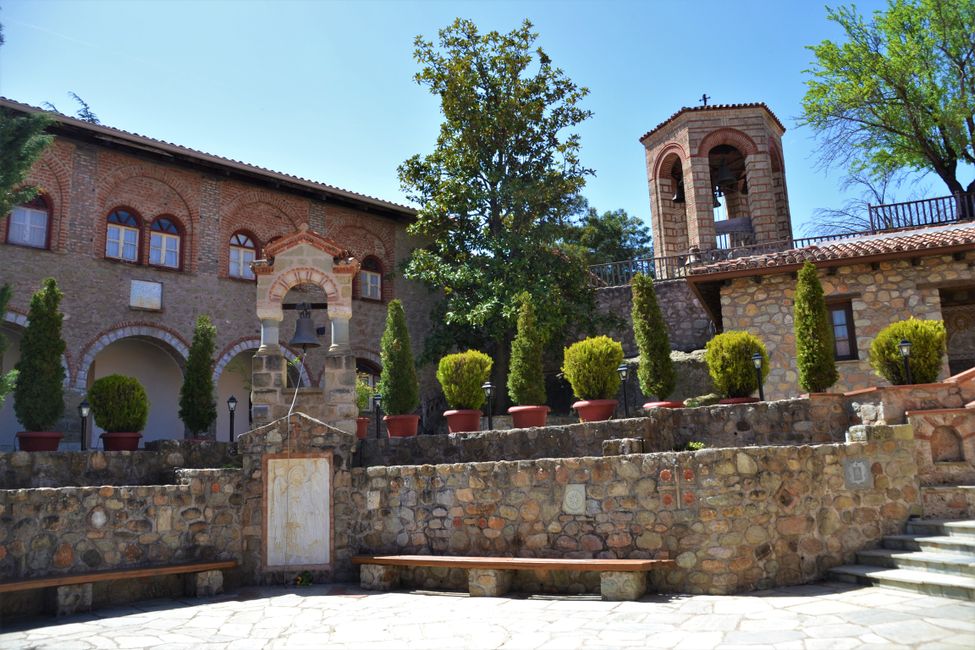
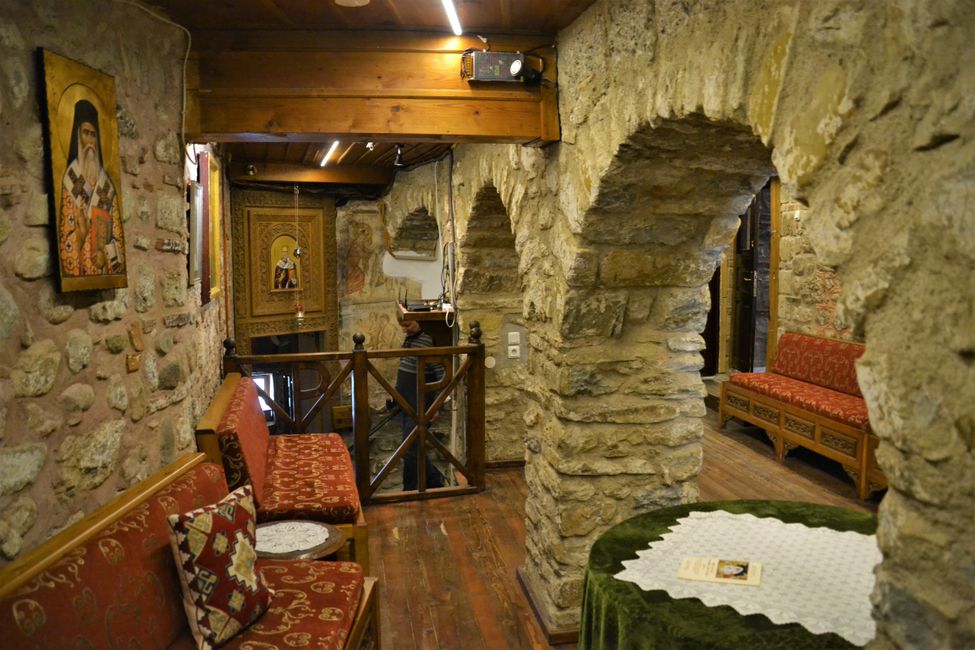
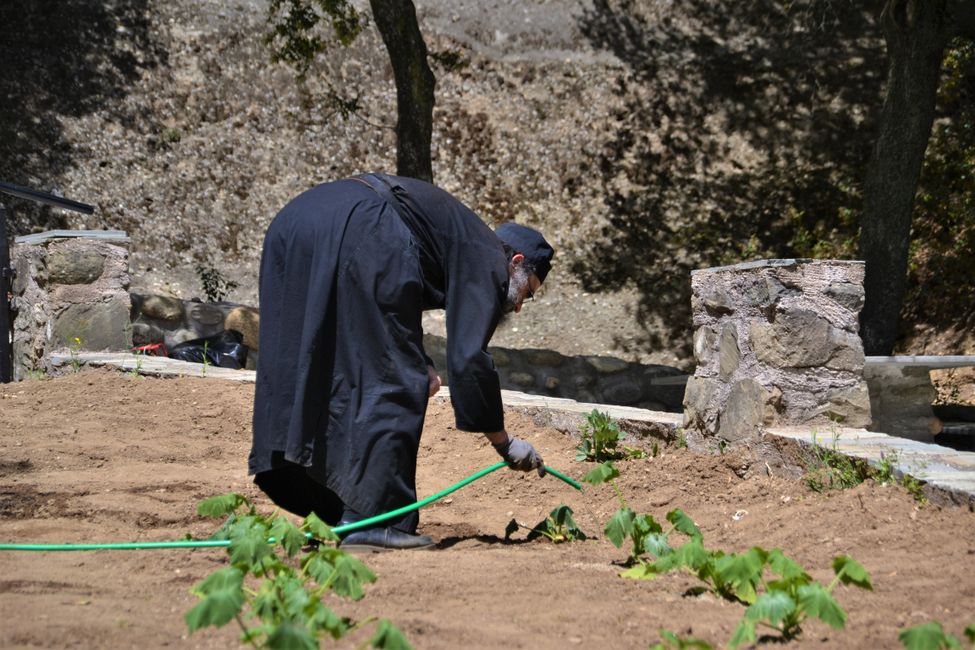
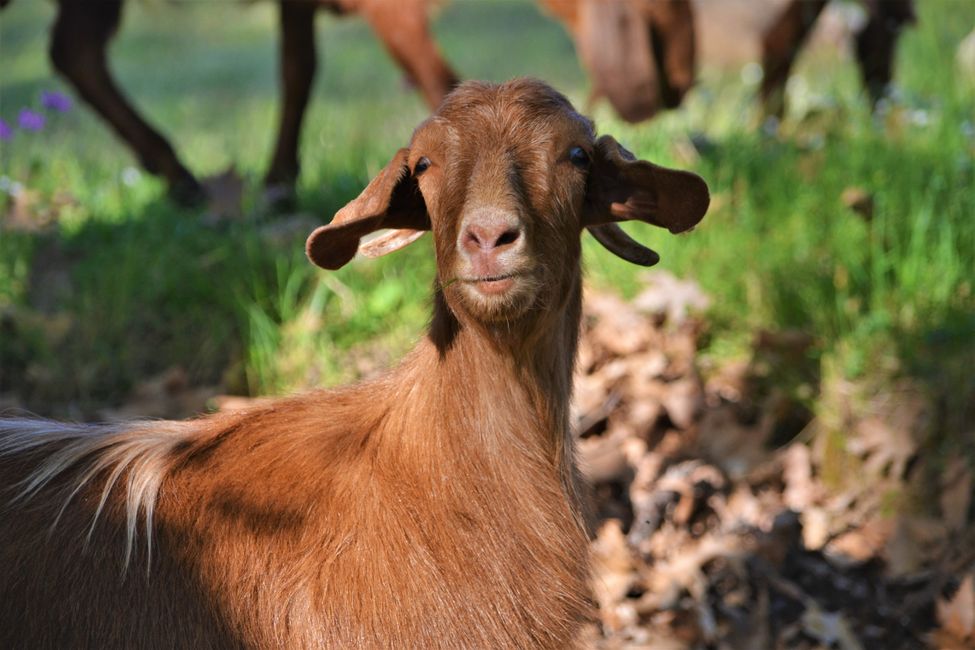
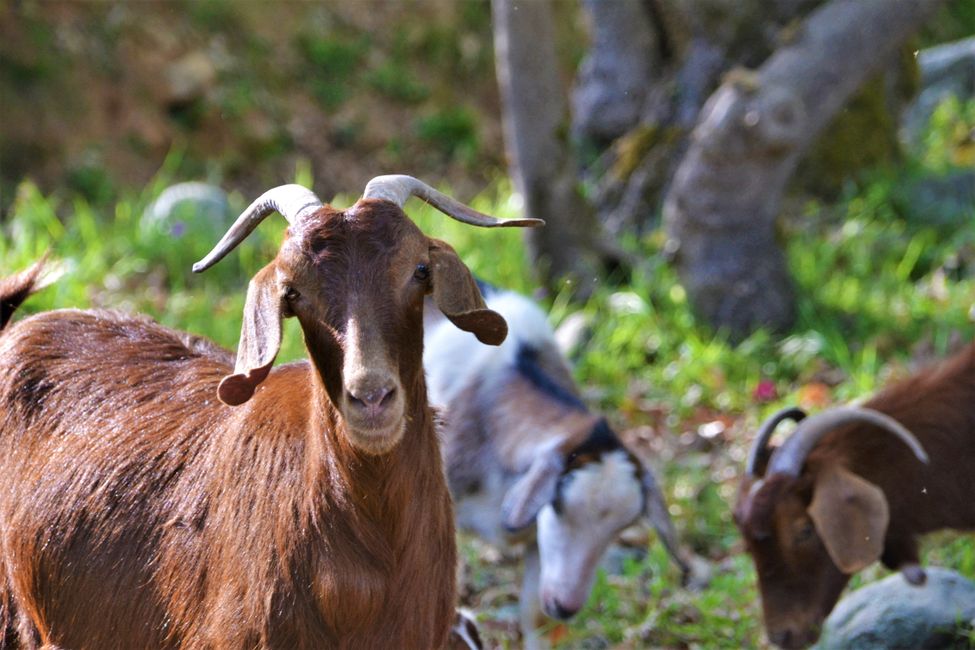
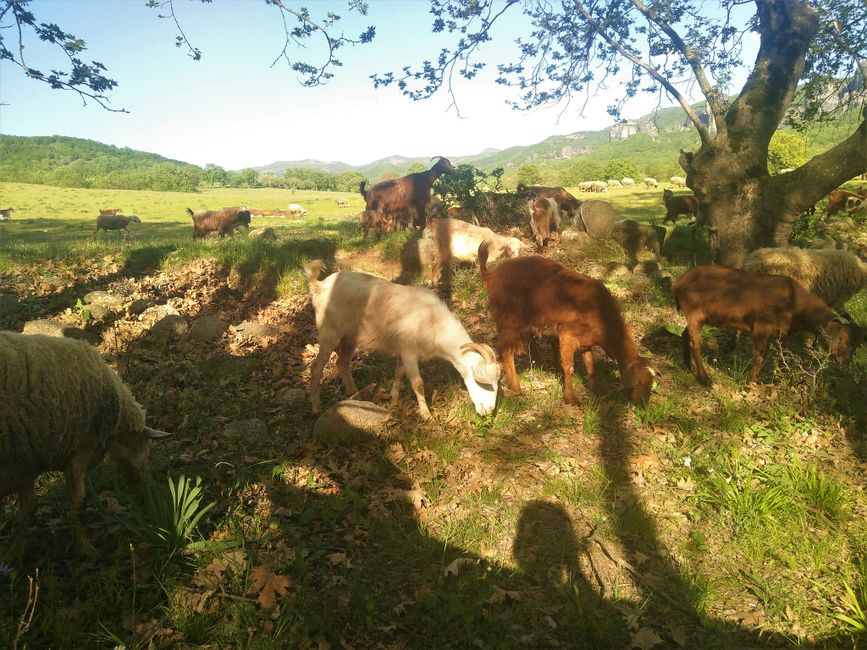
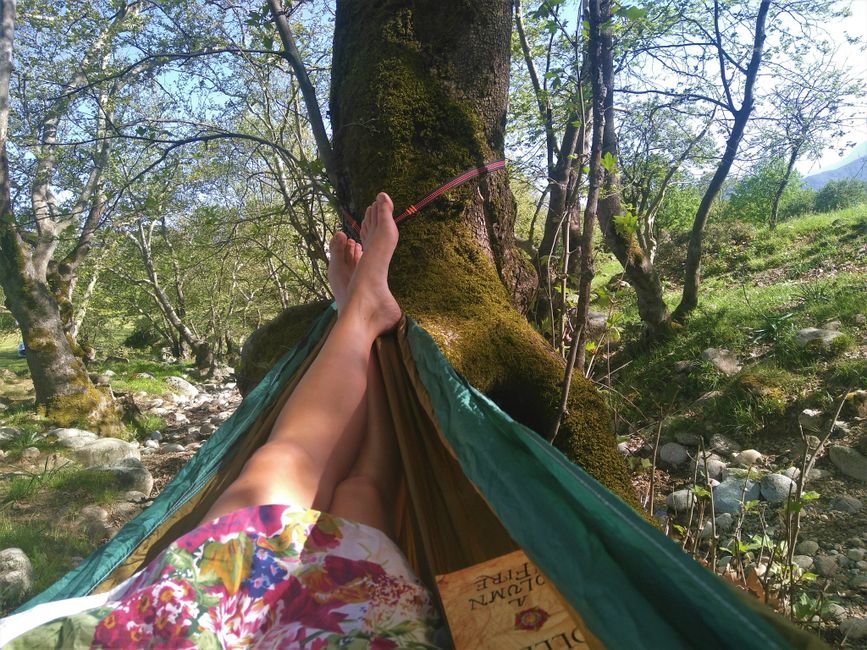
Nyorera kune Newsletter
April 23-25, 2022: Meteora, Kastraki, Kalambaka
F. Before I write about our spectacular visit to the Meteora Monasteries, I still have to say something about Orthodox Easter. We stayed overnight at a campsite in Kastraki and the owner gave us the tip to go to the church in the village at midnight on Holy Saturday. At eleven thirty we walked up the road to the church with many locals and a few other tourists. The church was already packed and prayers could be heard from inside through speakers on the church square. The square was filled with people, almost all of whom were holding a candle. There was an exuberant and festive atmosphere among the gathered. Shortly before midnight, the faithful and the priest came to the church square with burning candles and shared their fire with everyone else, so that at midnight everyone had a burning candle in hand. The Easter festival was then inaugurated at midnight with fireworks and loud shots, and everyone wished each other a happy Easter. in their car or walked home. Everyone tried in different ways to get their Easter light home without it going out. Those who were well prepared had brought a windbreak or a lantern, but most tried to transport the 30cm long candle without protection from the wind, so you could see people in many cars with burning candles in hand. I can't say how successful this is.
The next morning - Easter Sunday - we were awakened by a strong smell of smoke and the air was partially foggy. It seemed that all the neighbors were lighting their big grill on which the Easter lamb would turn for the next 5 to 7 hours. On the way to our parking lot in Kalambaka, from which we wanted to start a hike to one of the Meteora Monasteries, we passed countless Easter lambs. There was loud music throughout the city and there was a lively atmosphere at noon. Depending on the size of the family, the lamb on the grill was larger or smaller. A local told us that this year they only have a small lamb weighing 10kg, as they are only four this year.
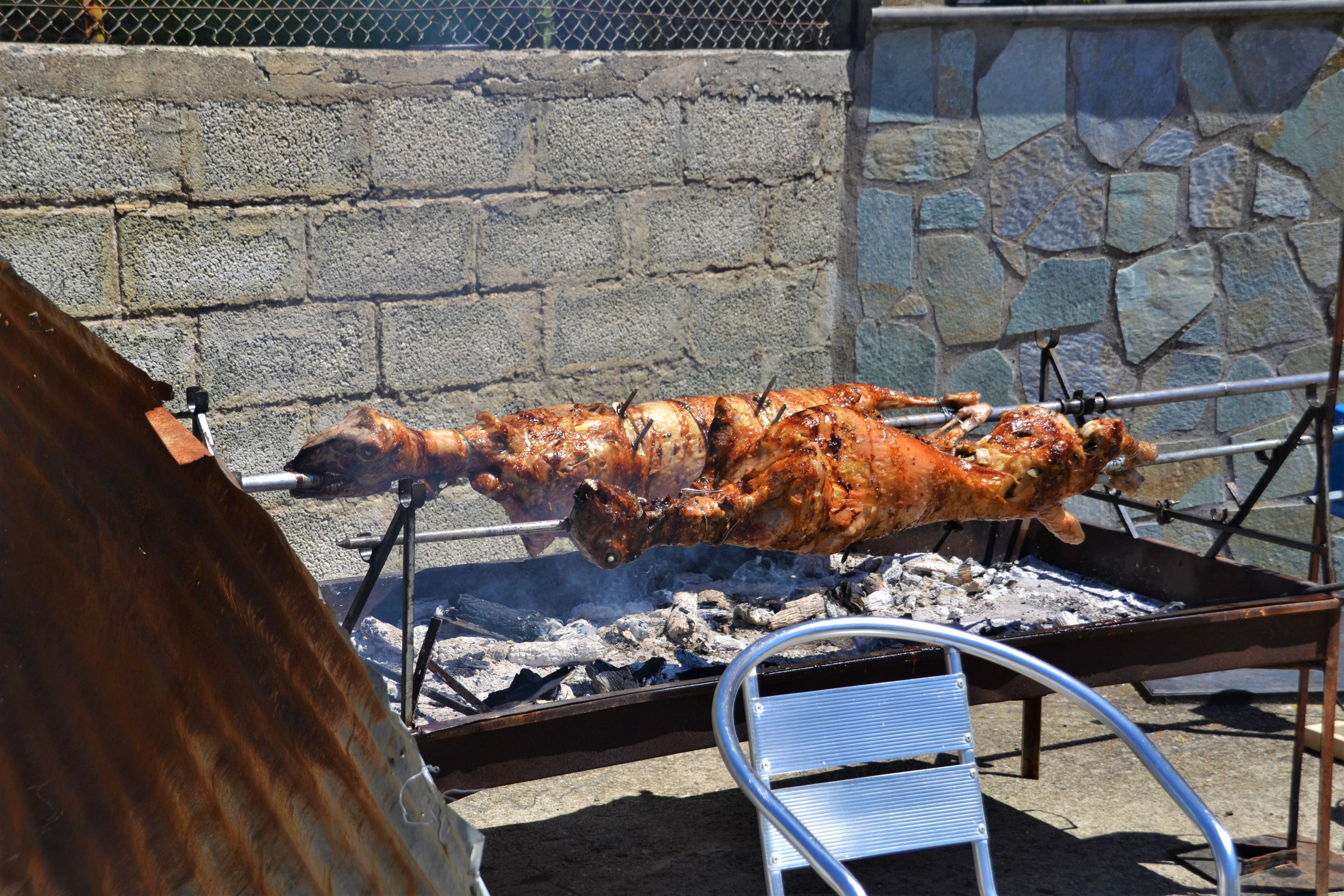
Due to the long night and various conversations at the campsite, we didn't start our hike until 1 p.m. We had received a map from the campsite that showed hiking trails, roads, and small paths to the 6 monasteries. At 27 degrees Celsius in the shade, the sun was burning terribly, so we tried to find the small paths, as we assumed there would be more shade than on the main hiking trails. It worked wonderfully until we got lost for the first time. Suddenly, we were in a dead-end and couldn't go any further. So we went back to the last junction and then in the other direction. A few minutes later, we were again in a dead-end and the paths were more like paths where you had to climb more than walk, and in some cases I would have liked to have a machete. We had to realize that the map we had received was not as detailed as we thought and that not all the marked footpaths existed. Moreover, there were no signs indicating the direction. With our GPS, we somehow managed to get through the forest in the end and reached one of the monasteries of Meteora. However, we had to walk the last section on the road. But on the footpaths we met climbers more often who were climbing the steep walls of the mountains. It looked spectacular when you saw a very small person hanging in the rock at a great height.

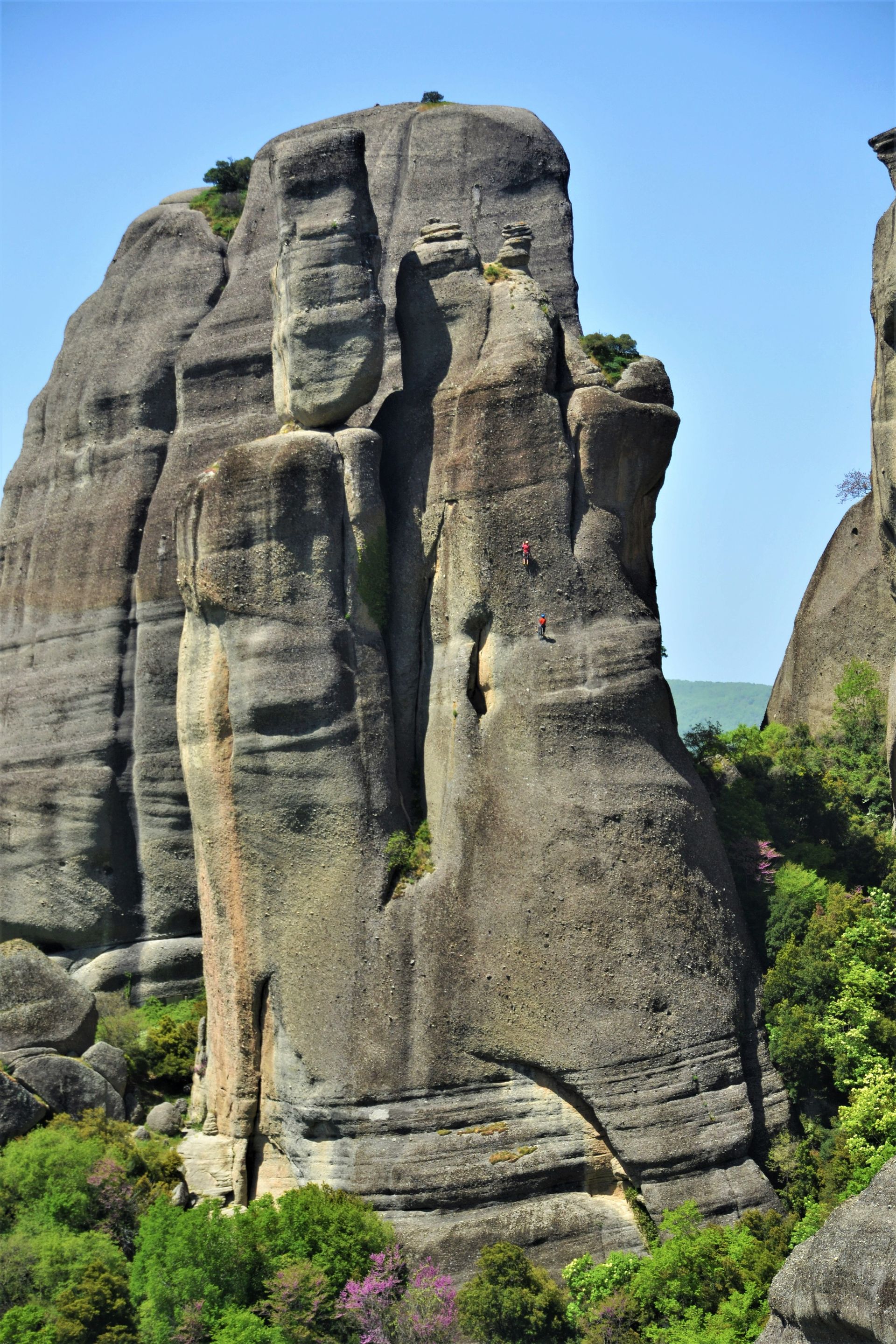
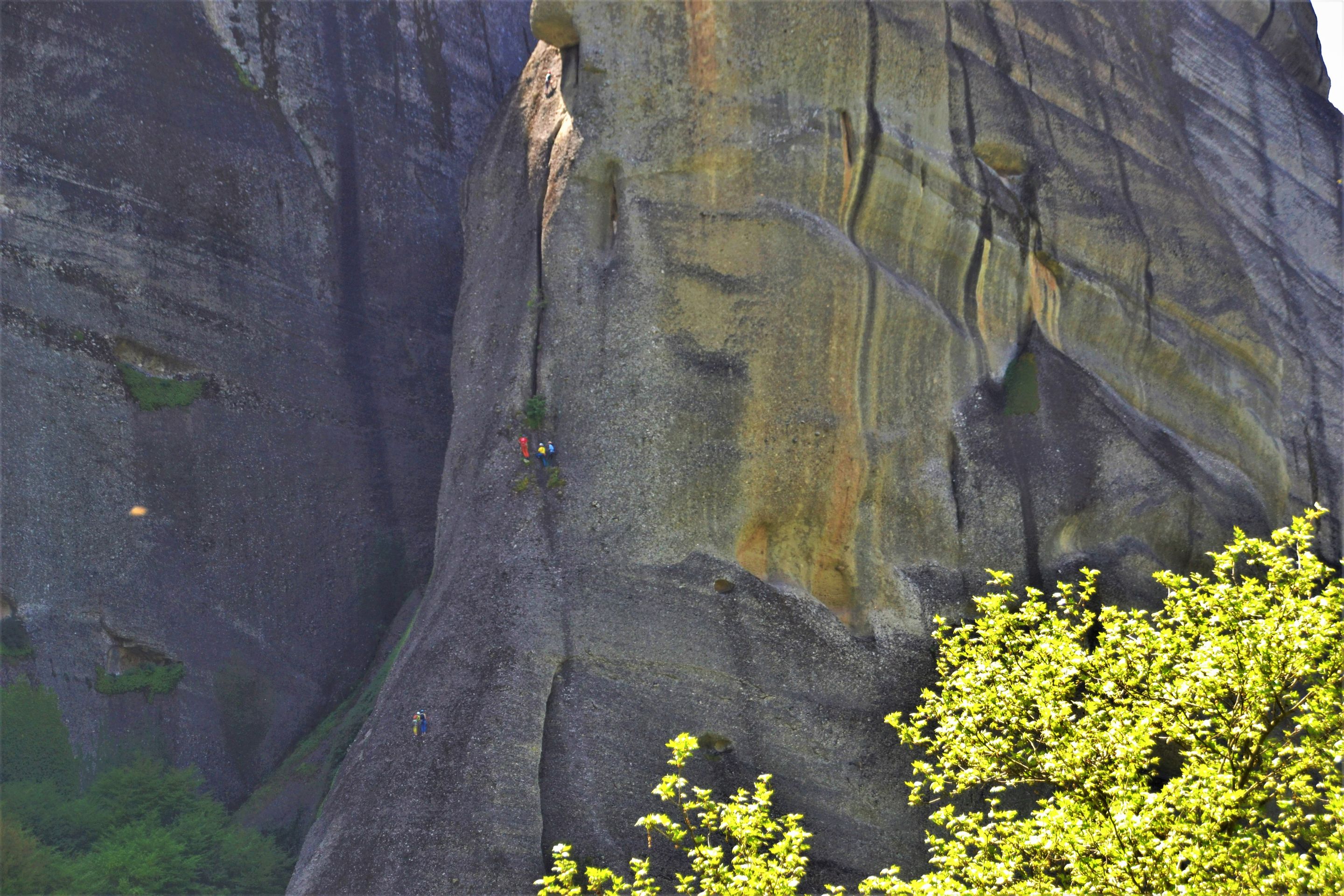
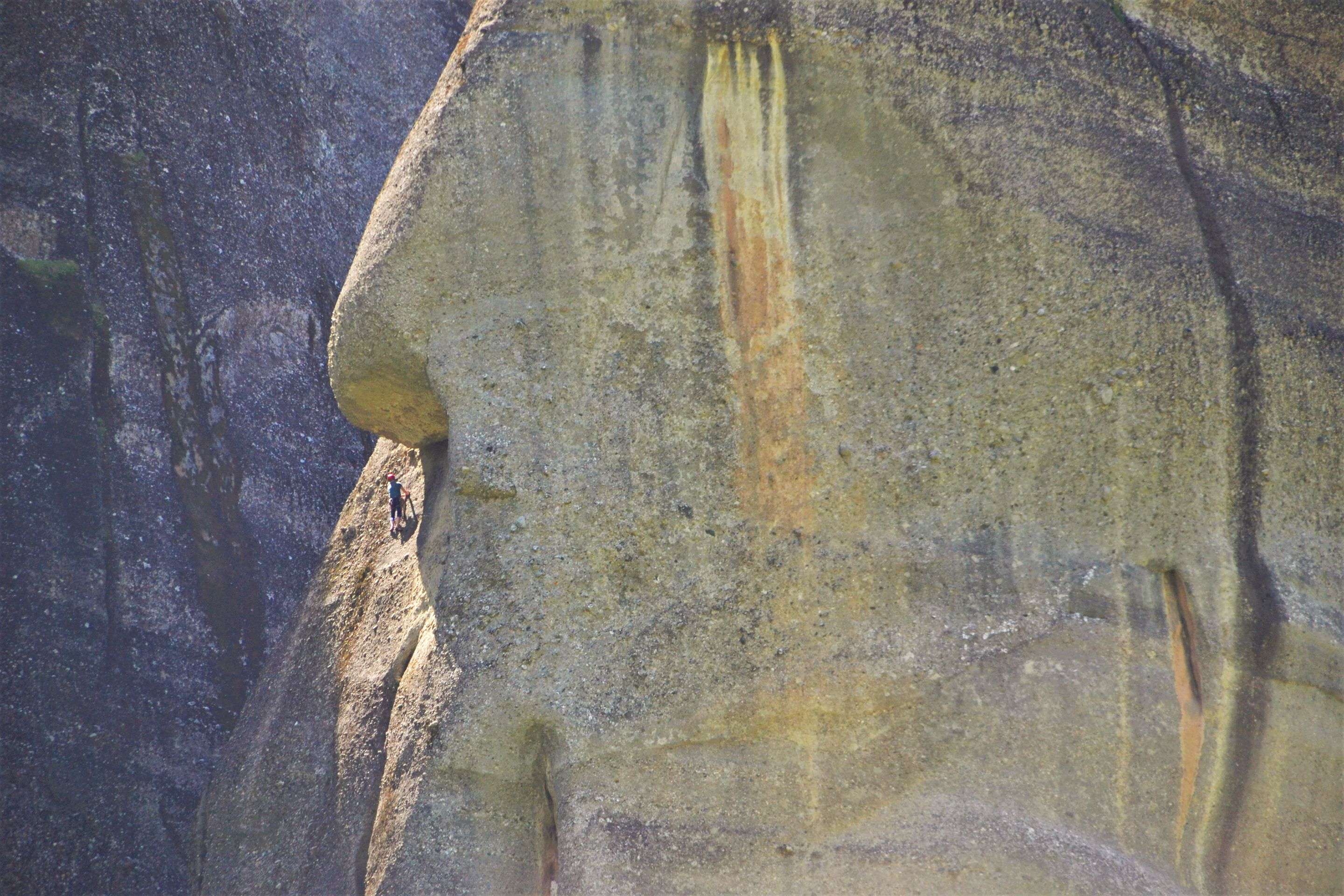
The monasteries of Meteora have been around since the 14th century and there used to be 24 of them. Today, six of them are still inhabited and all of them can be visited. Until the end of the 1950s, the monasteries were partially only accessible via rope ladders or by means of winches. The monasteries are built on rock formations that are up to 400 meters high and steep. When there is fog or haze in the valley, it looks like the monasteries are floating. Nowadays, there is a very well-developed road between the monasteries and only the last 100 meters of altitude have to be covered on carved stairs into the rock. The view of the gigantic rock formations is already worth a visit, but the monasteries on six of the rocks make the view simply indescribably beautiful. I can't even imagine how much sweat-inducing work went into the construction of the monasteries, as each individual stone was brought up by means of winches and rope ladders.

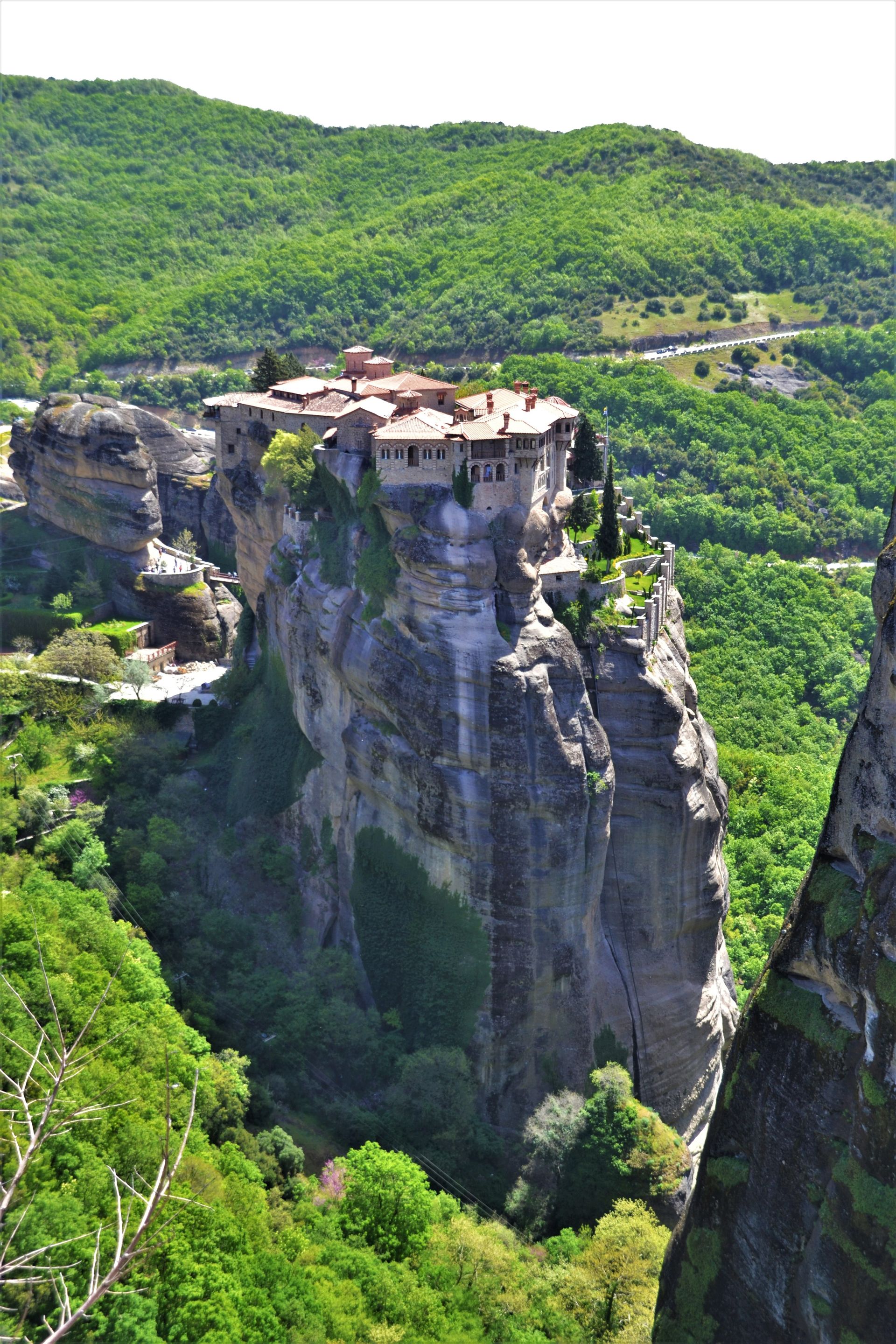
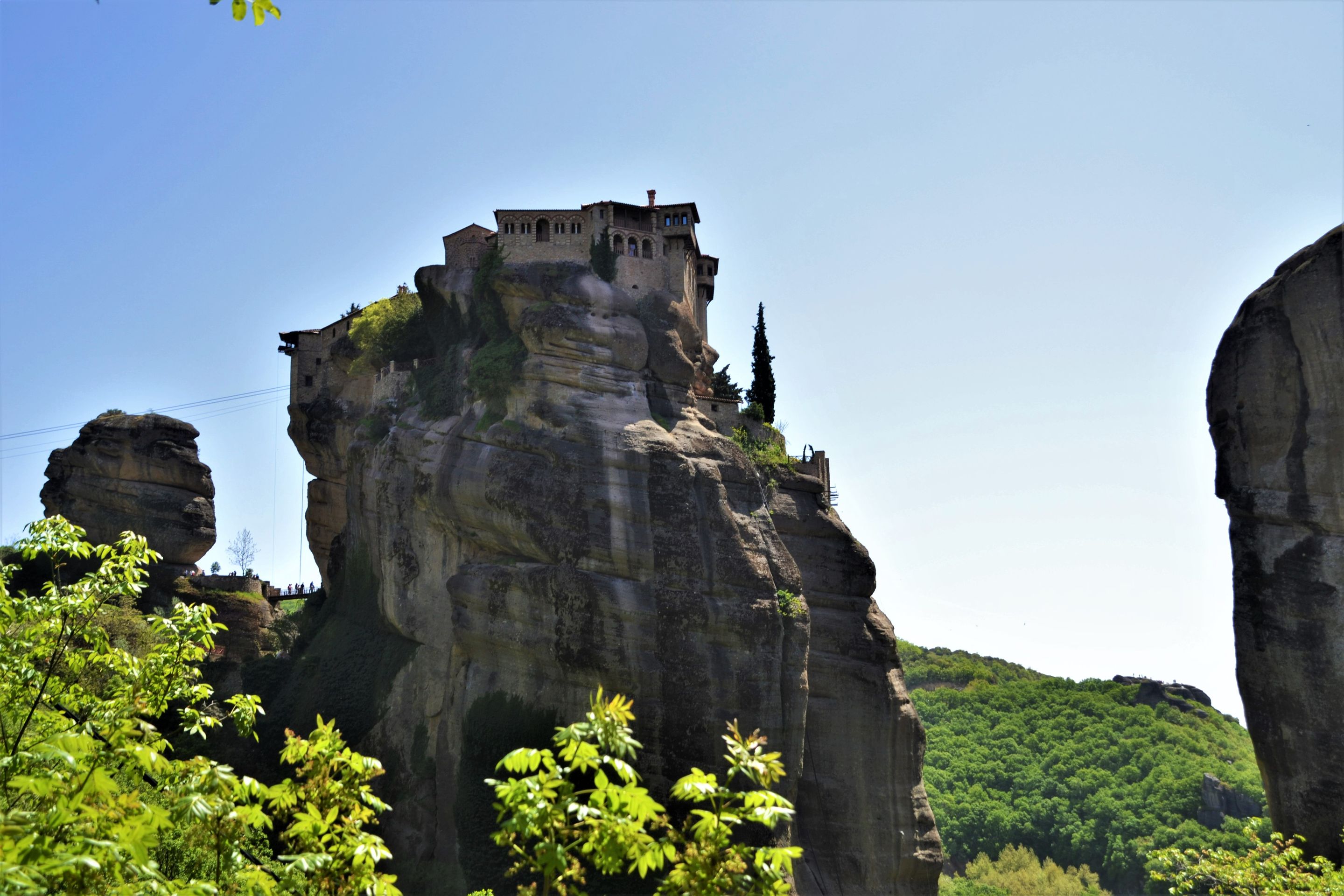

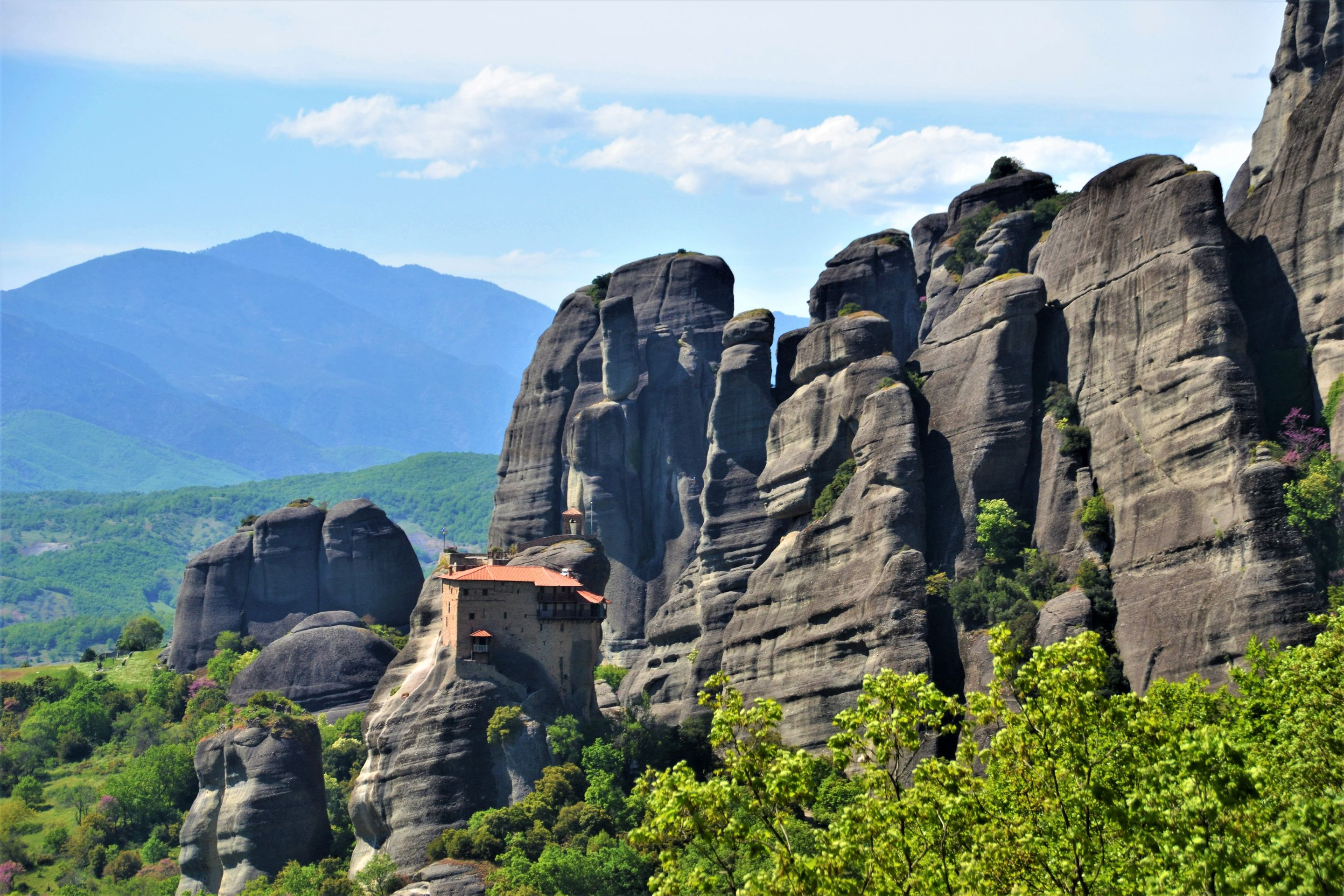
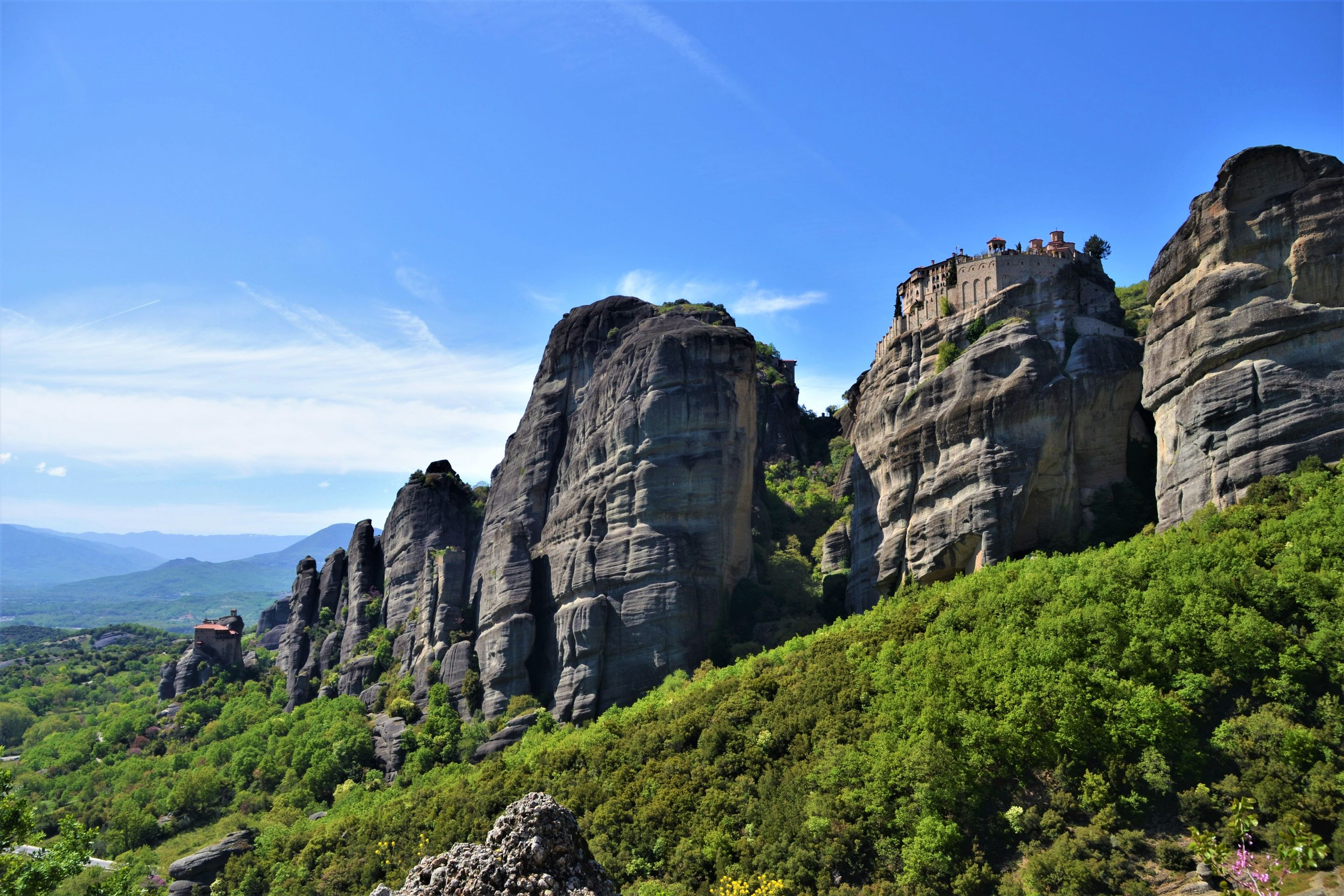
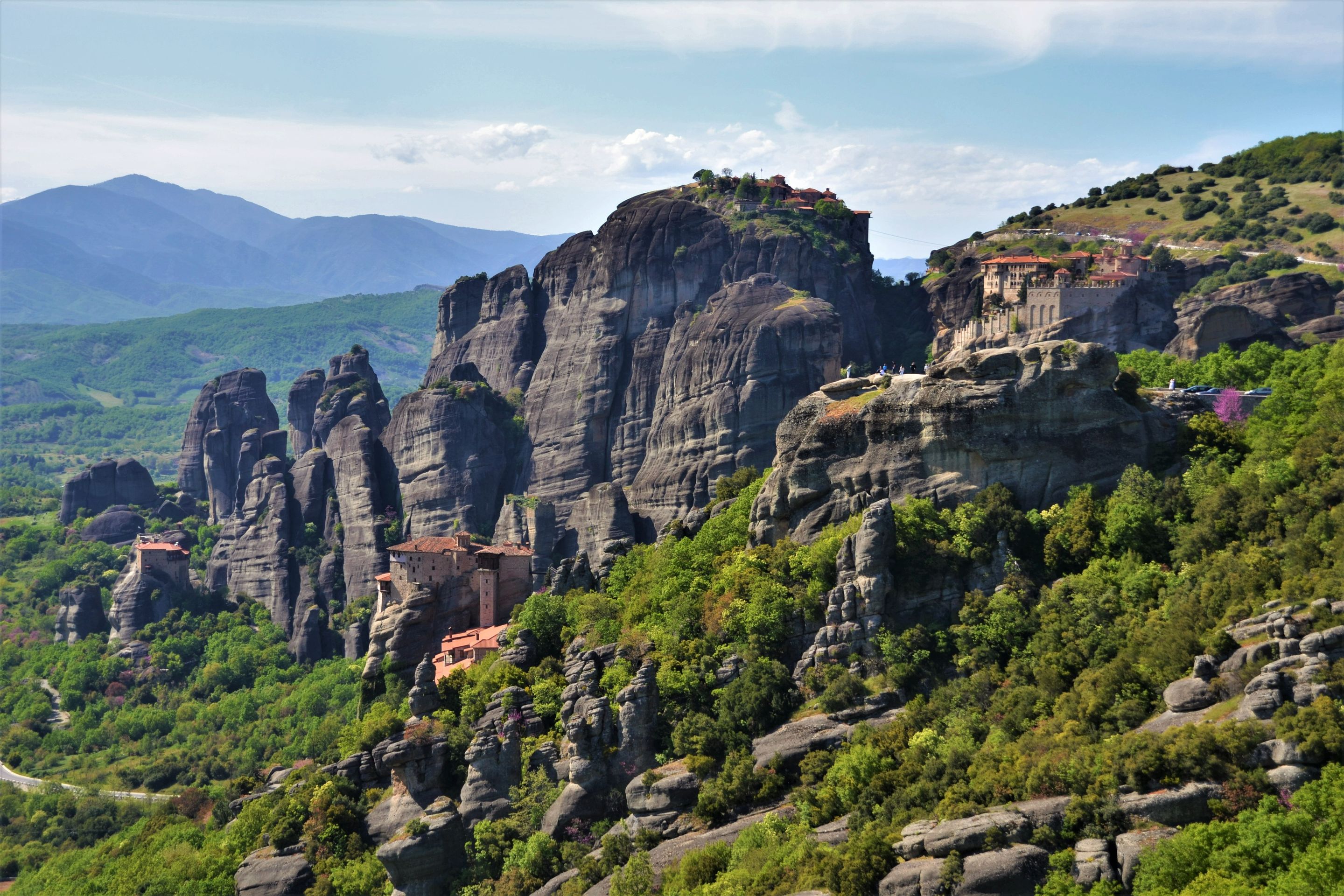

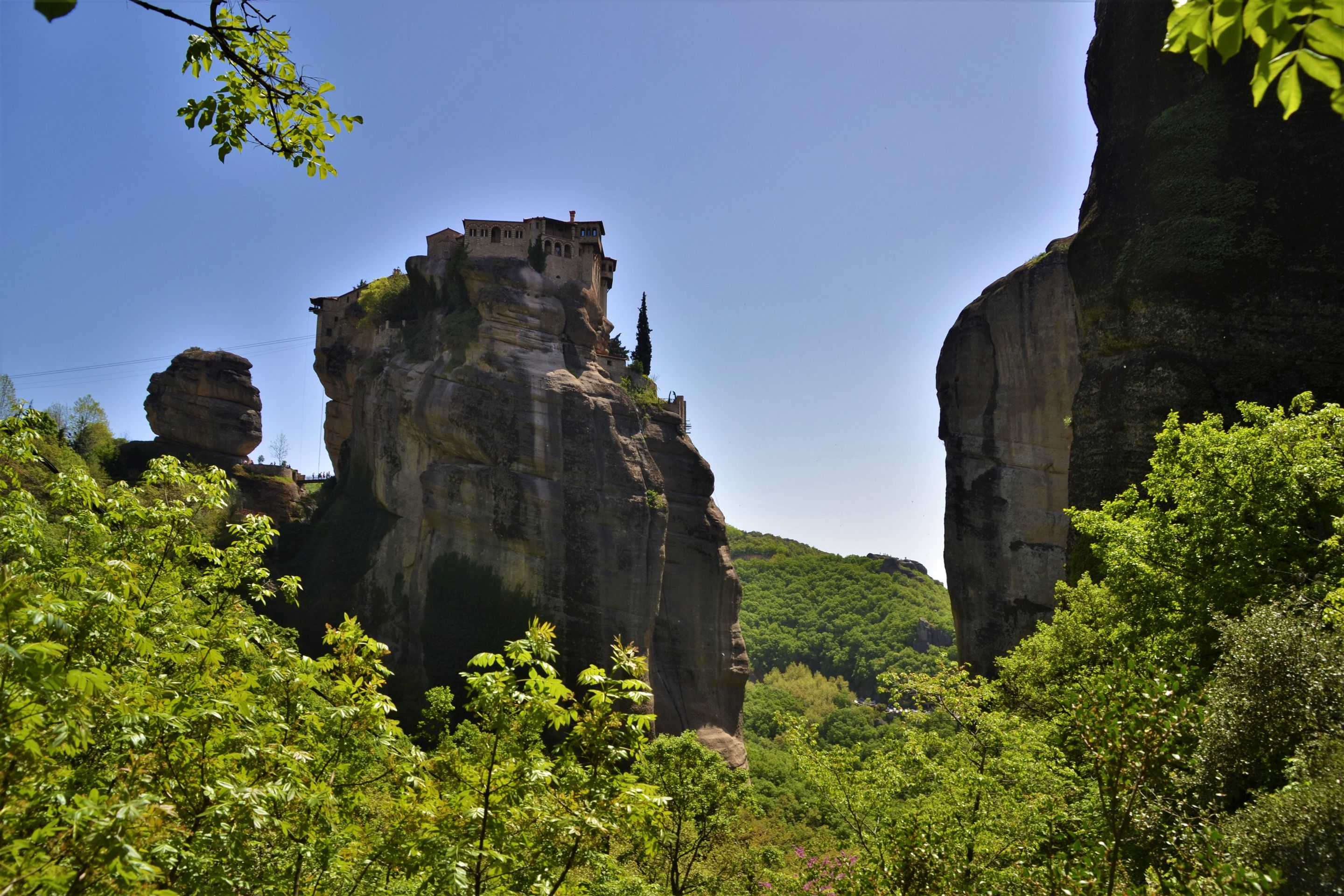


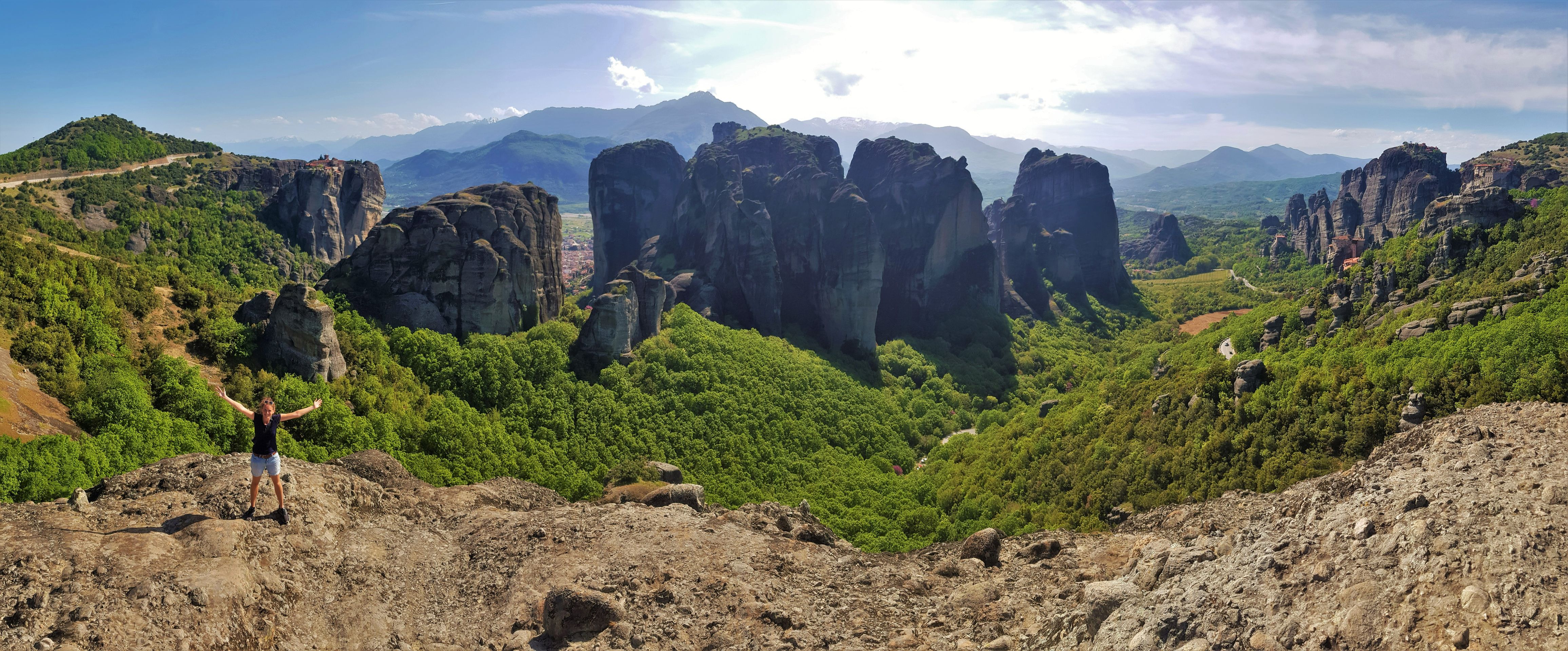
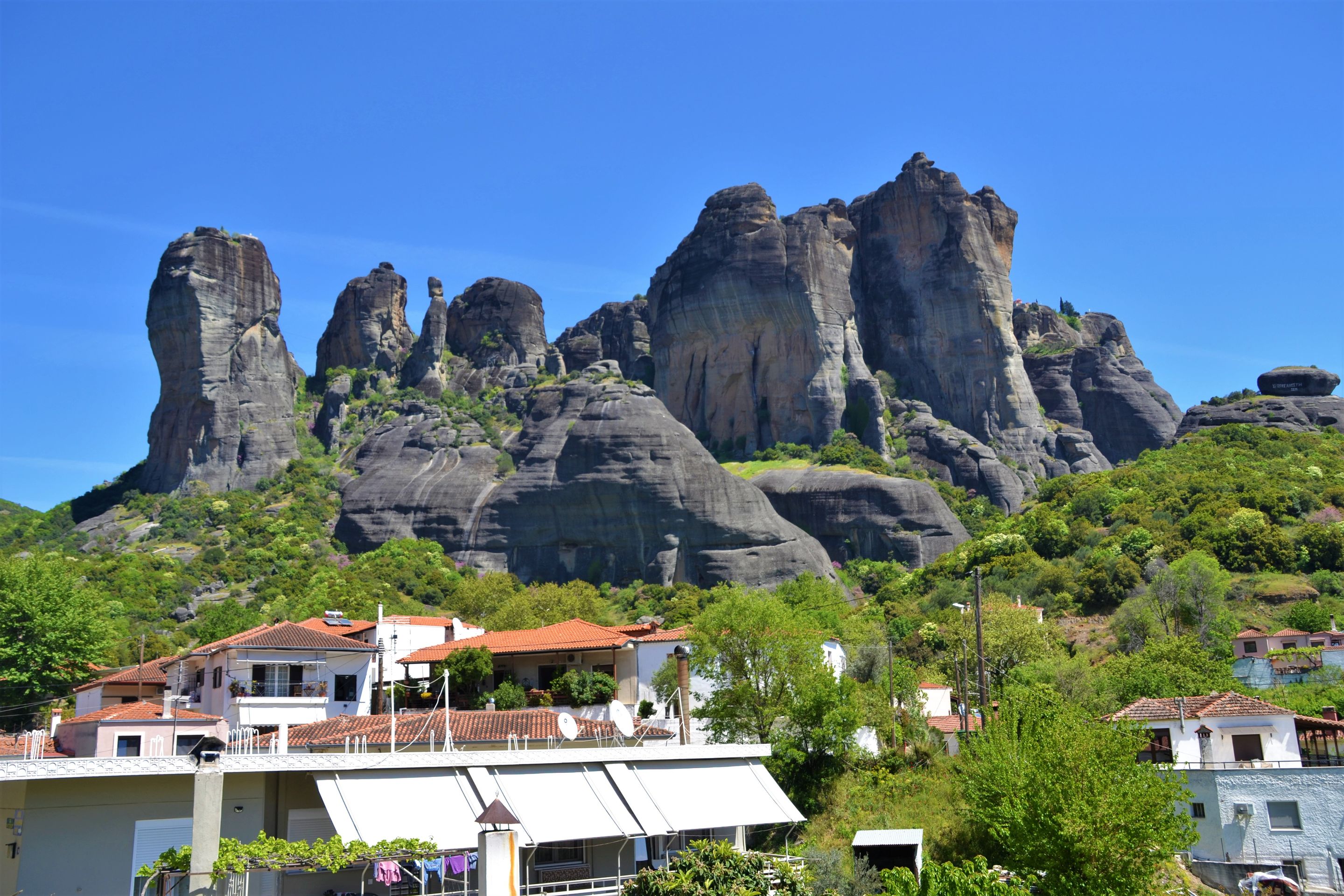
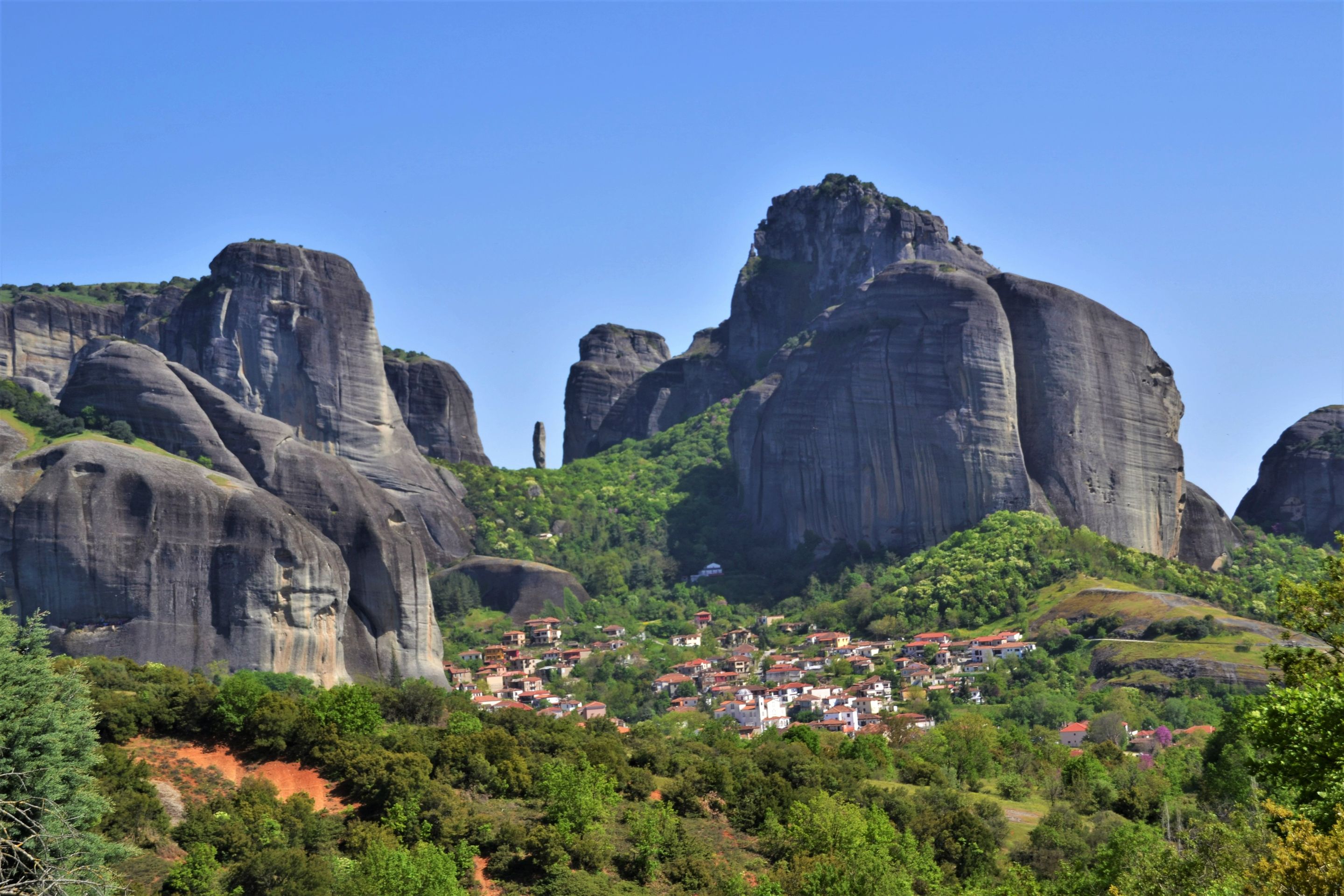
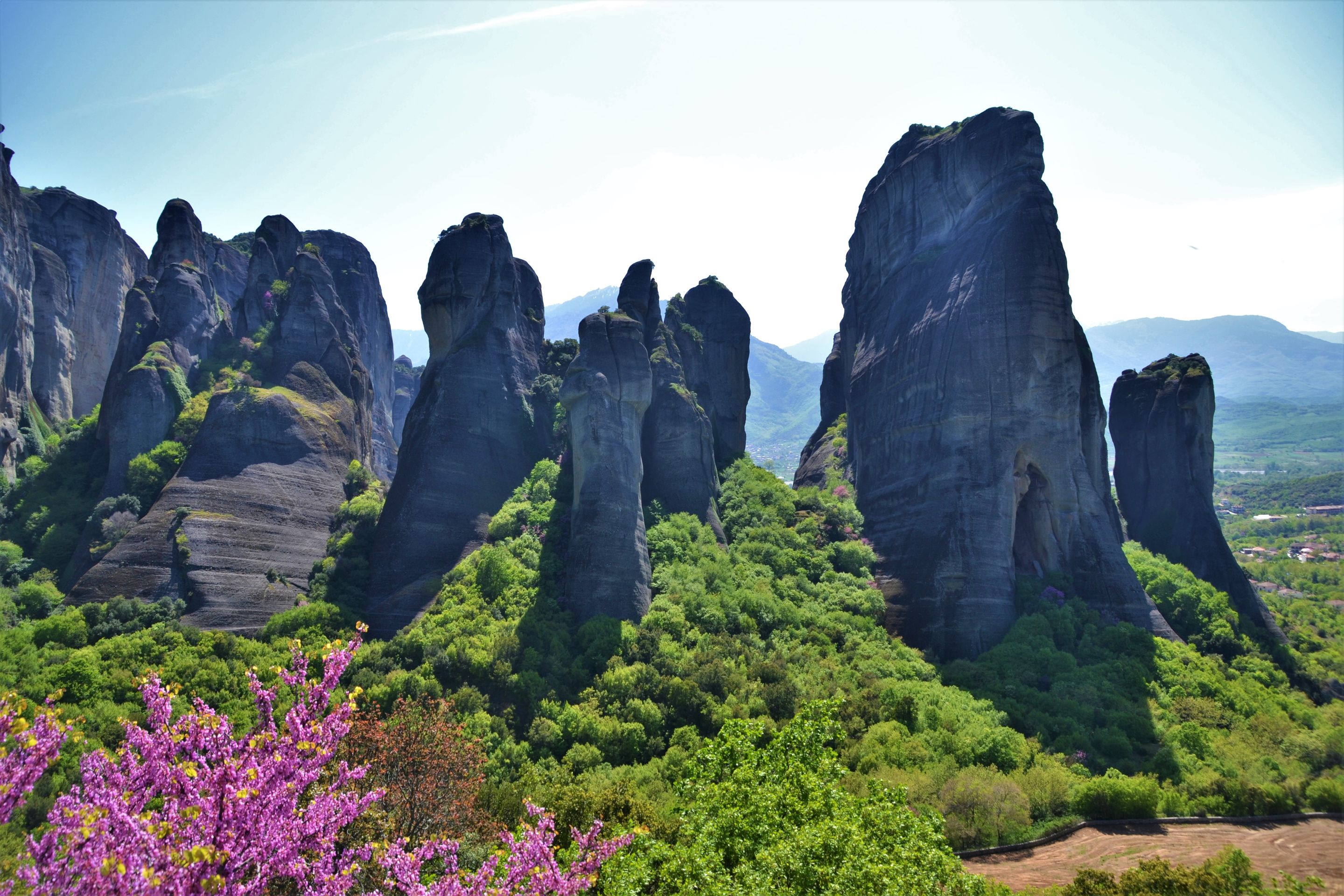
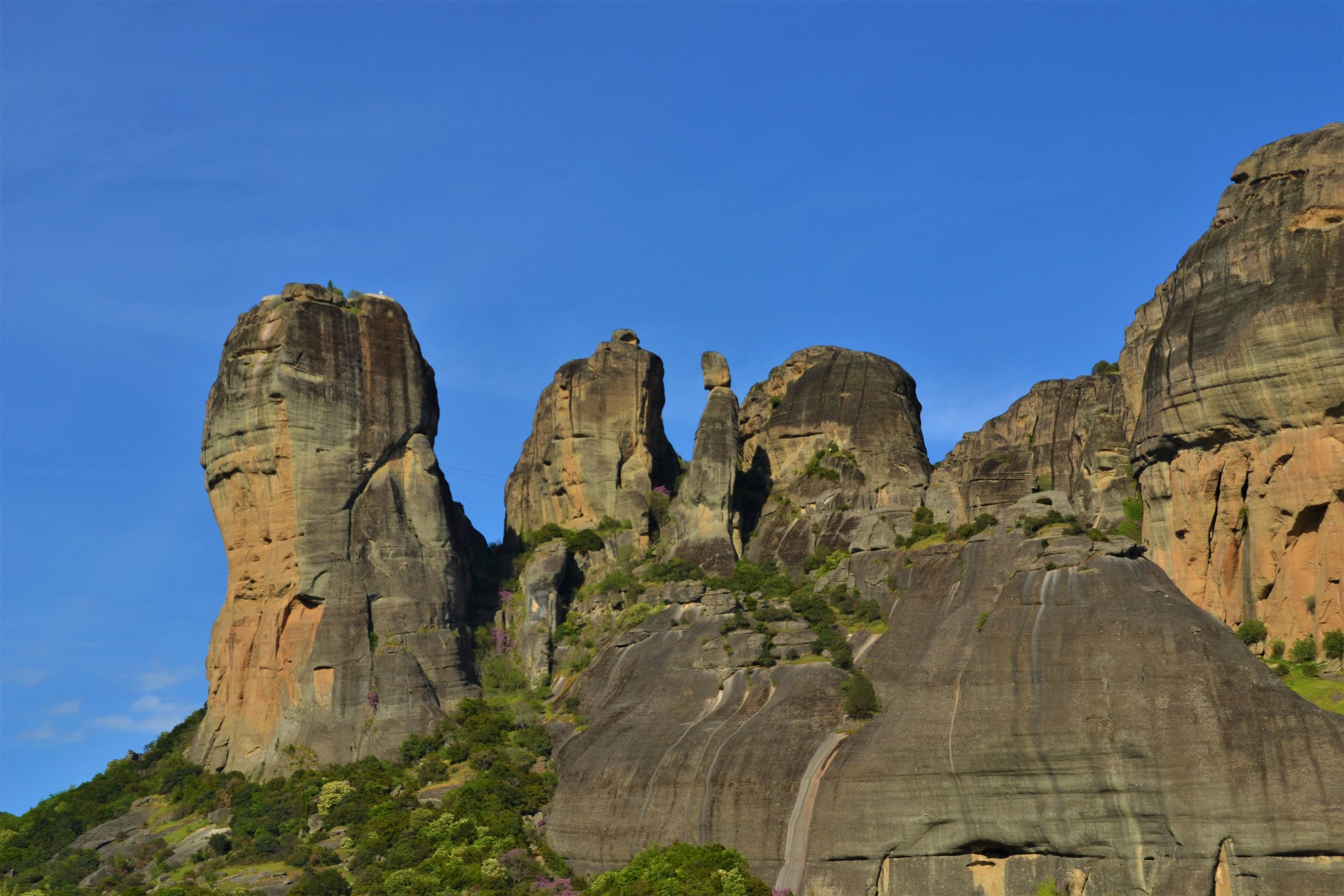



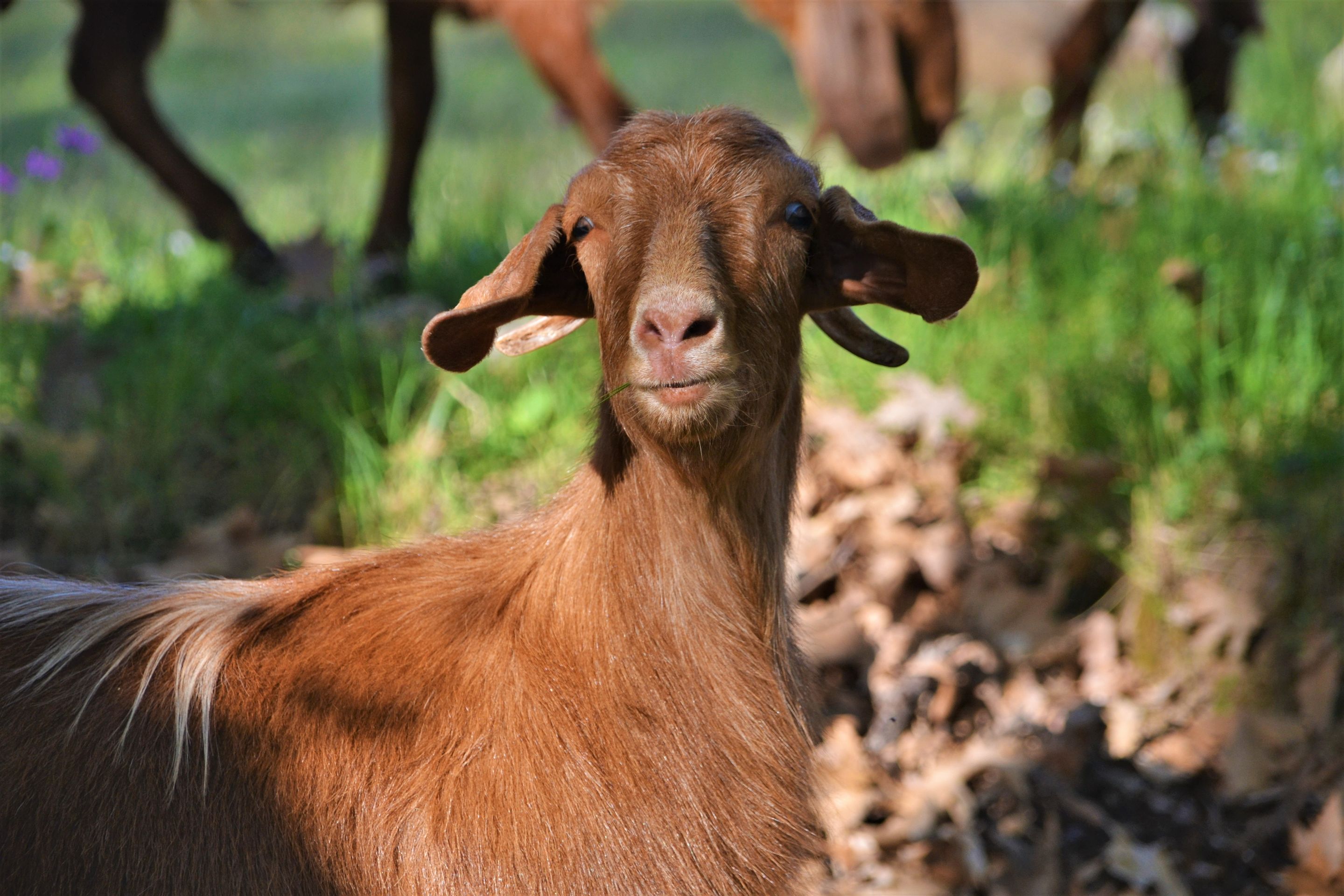

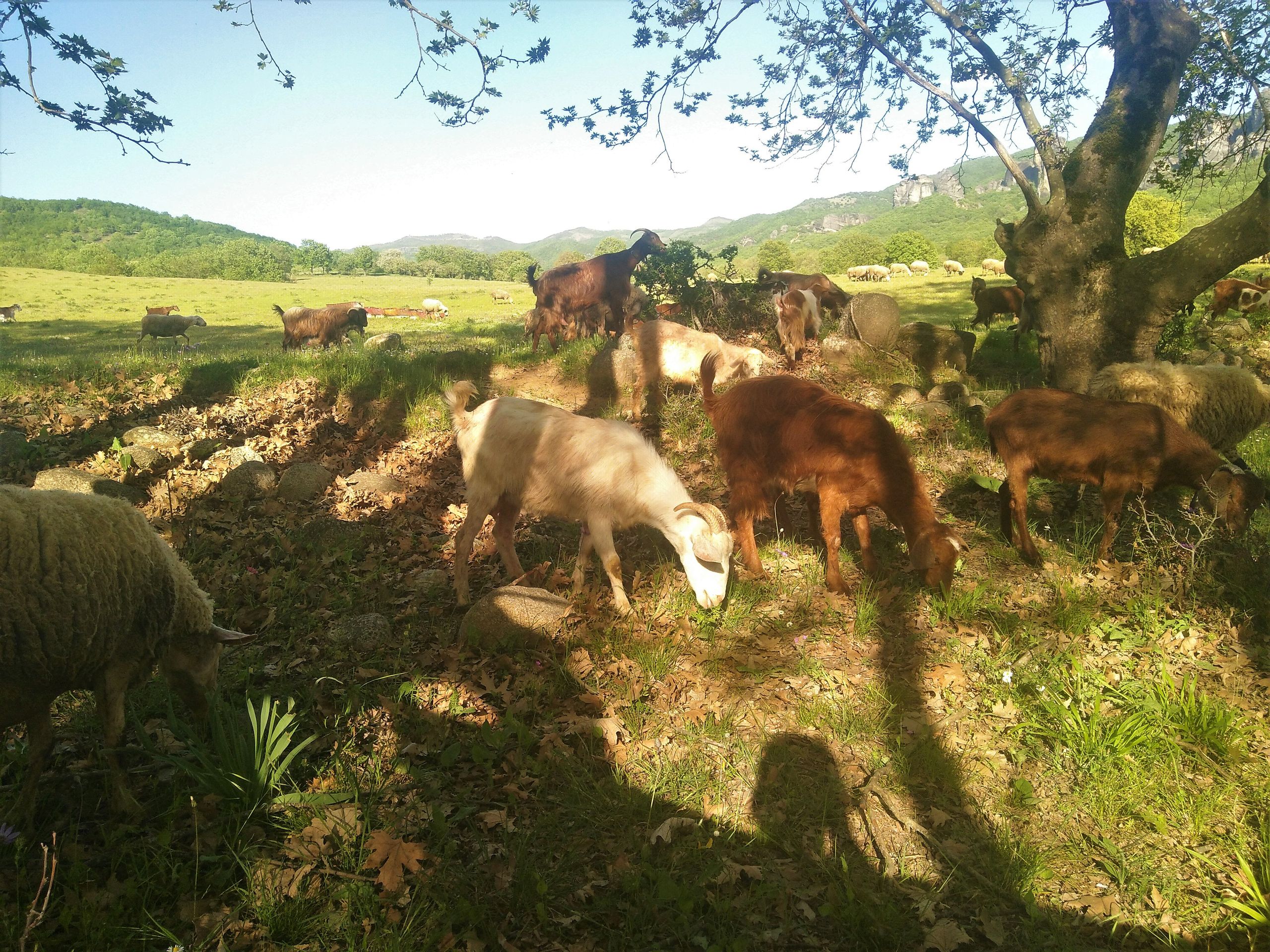
The next day, we again attempted to reach one of the monasteries on foot. This time we started from our overnight spot on a huge meadow in the remote countryside. We used the tracks of the farmers and soon reached one of the two hiking trails in the Meteora area. Although it was still not signposted, it was much easier to find and more walkable than the previous one. After 90 minutes of hiking in the morning sun, we reached the largest of the six monasteries and joined the countless tourists who arrived here in their cars or in large buses, and climbed the last 150 meters in elevation via a rock staircase to the entrance of the monastery. The monastery was in very good condition and there was also a museum about the history of the monastery. In addition, you could visit the former kitchen and the large chapel. There were many murals in the chapel and it was abundantly decorated with gold. On the wall paintings, scenes of devotion to God or similar could often be found, and one could see many rolling heads or other severed limbs.

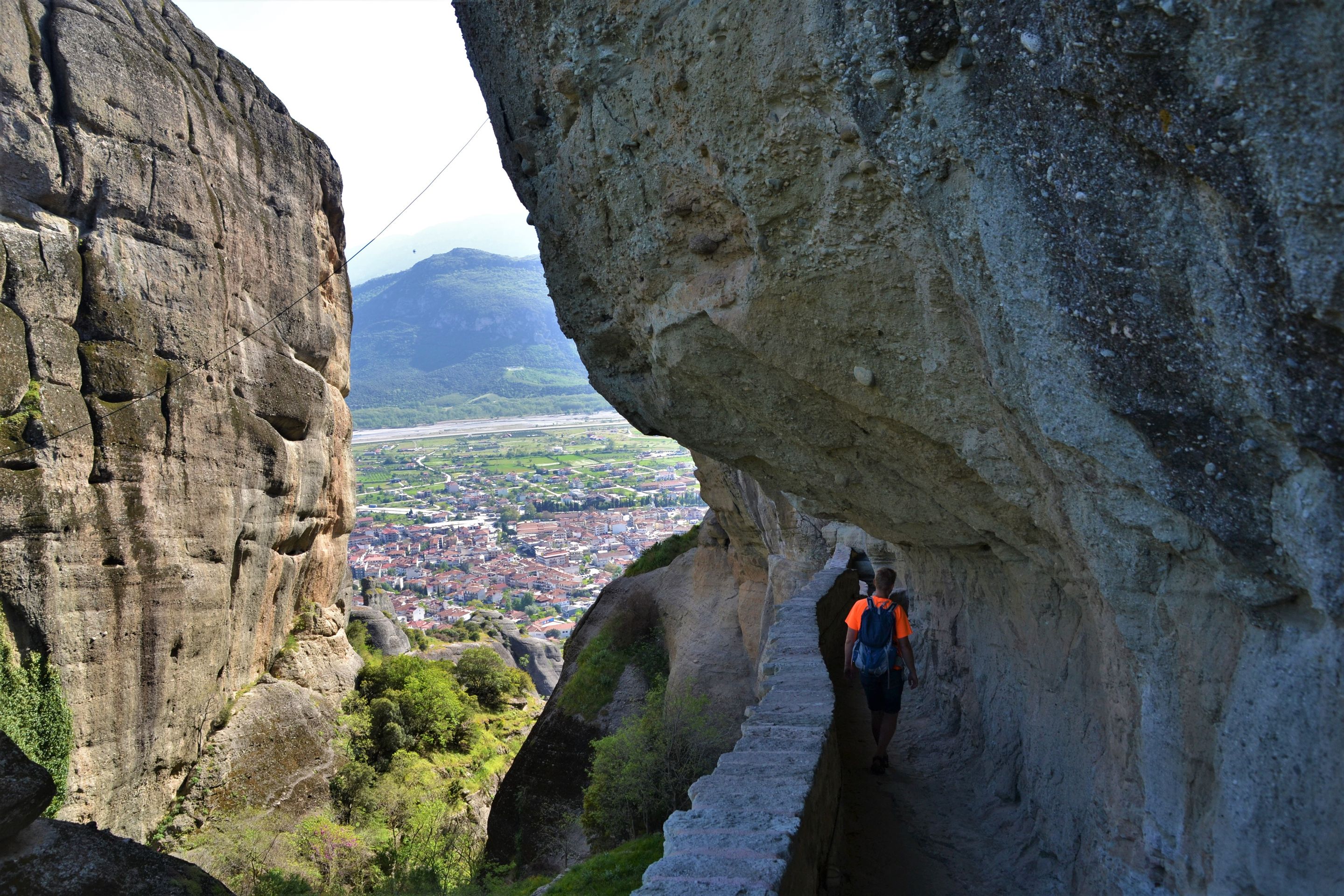
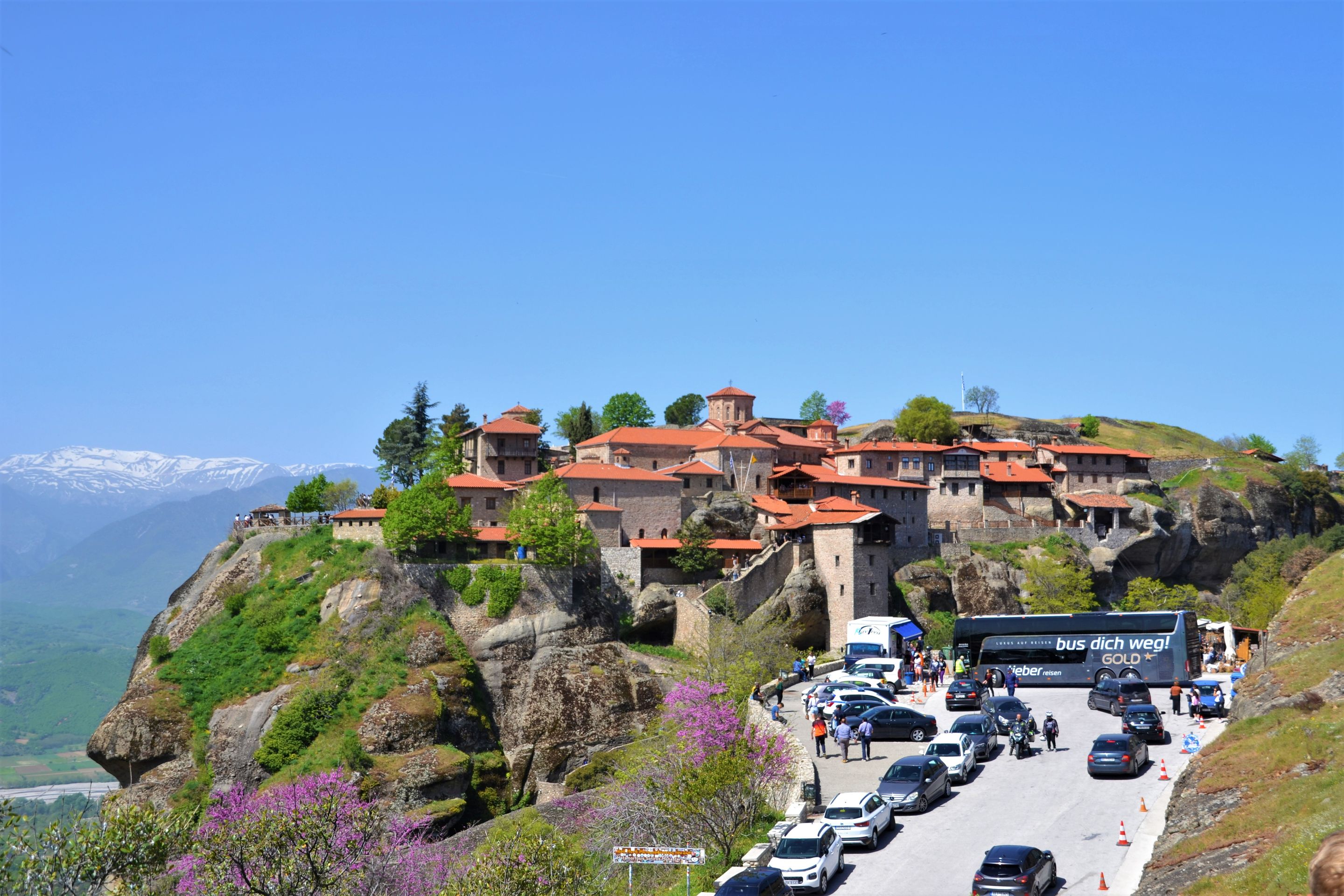

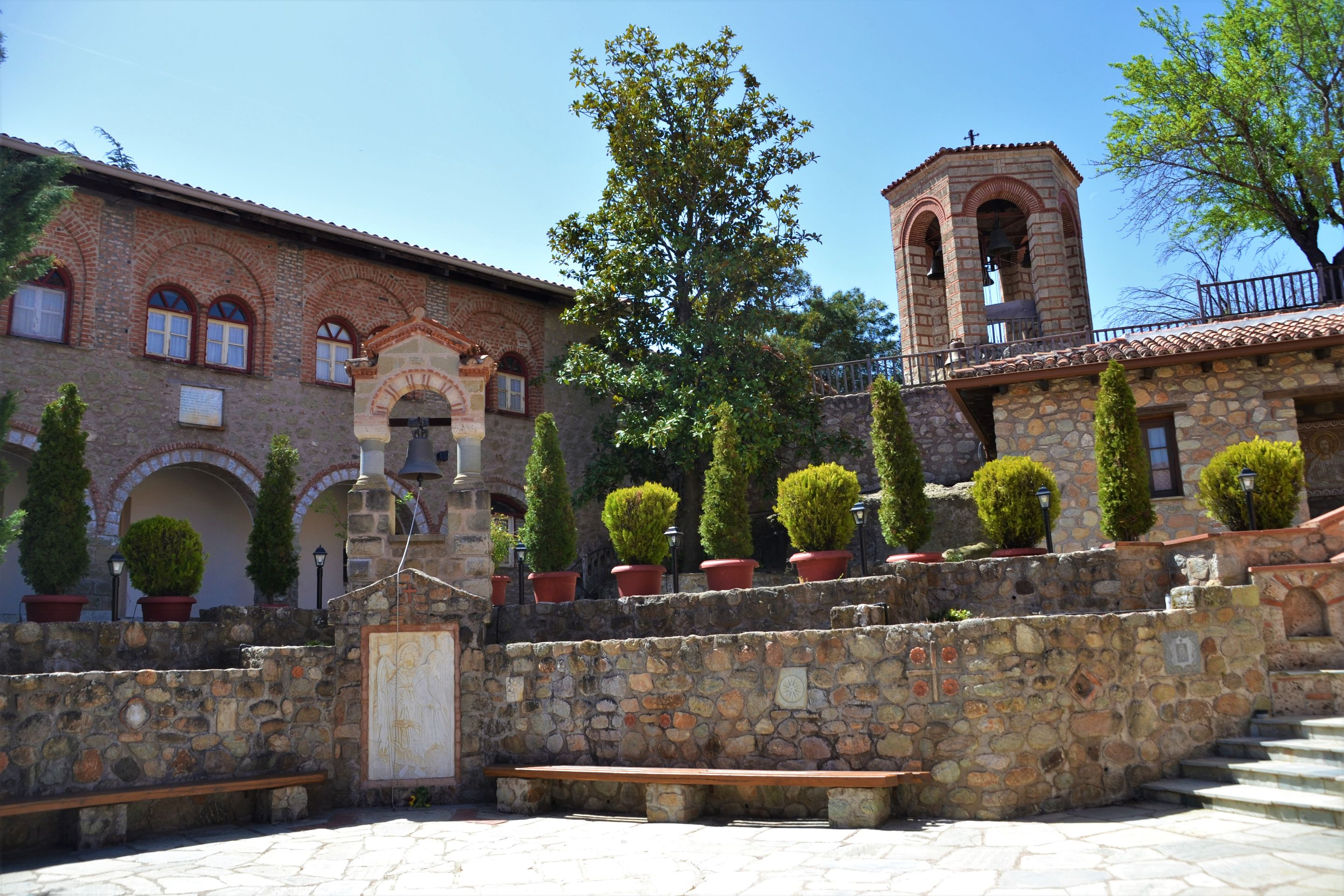
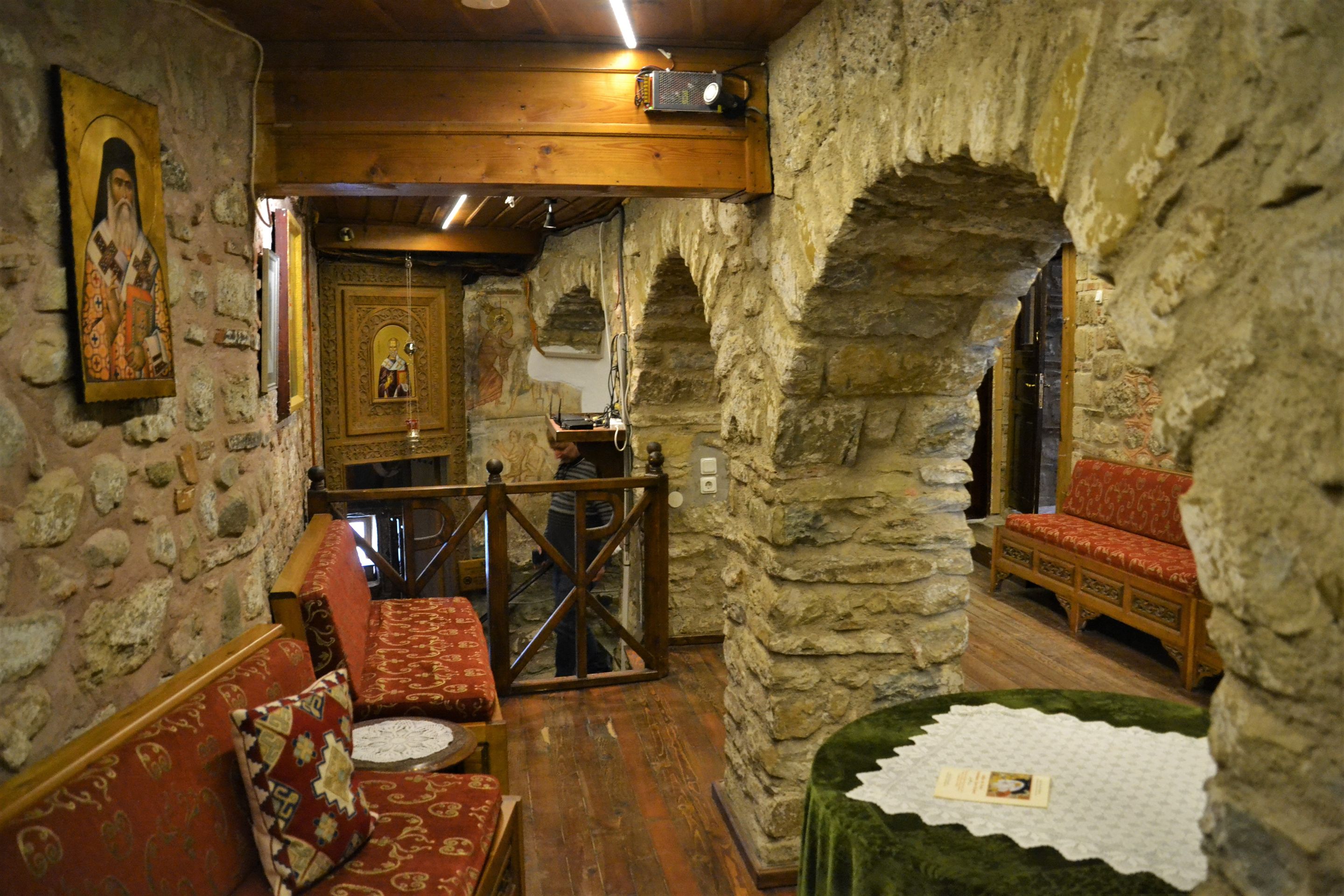
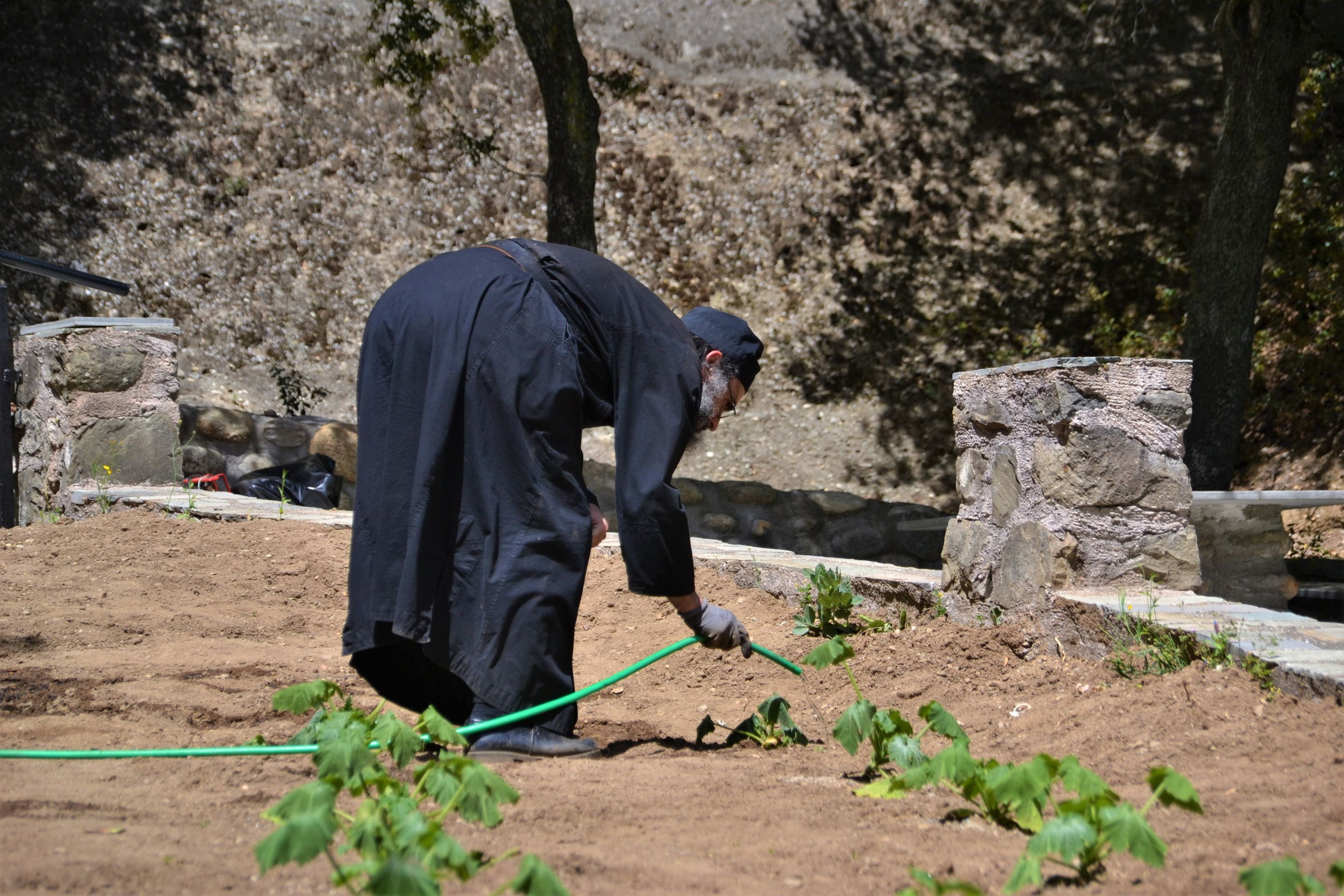
From the largest monastery, we headed to one of the smallest monasteries in Meteora. Although there was not as much space as in the last one, there was also a small chapel with similar murals, a large lounge, a large outdoor terrace, and an elevator here. Of course, we couldn't visit the private quarters of the monks and nuns at both monasteries. Nevertheless, the short glimpse into their world was totally exciting.
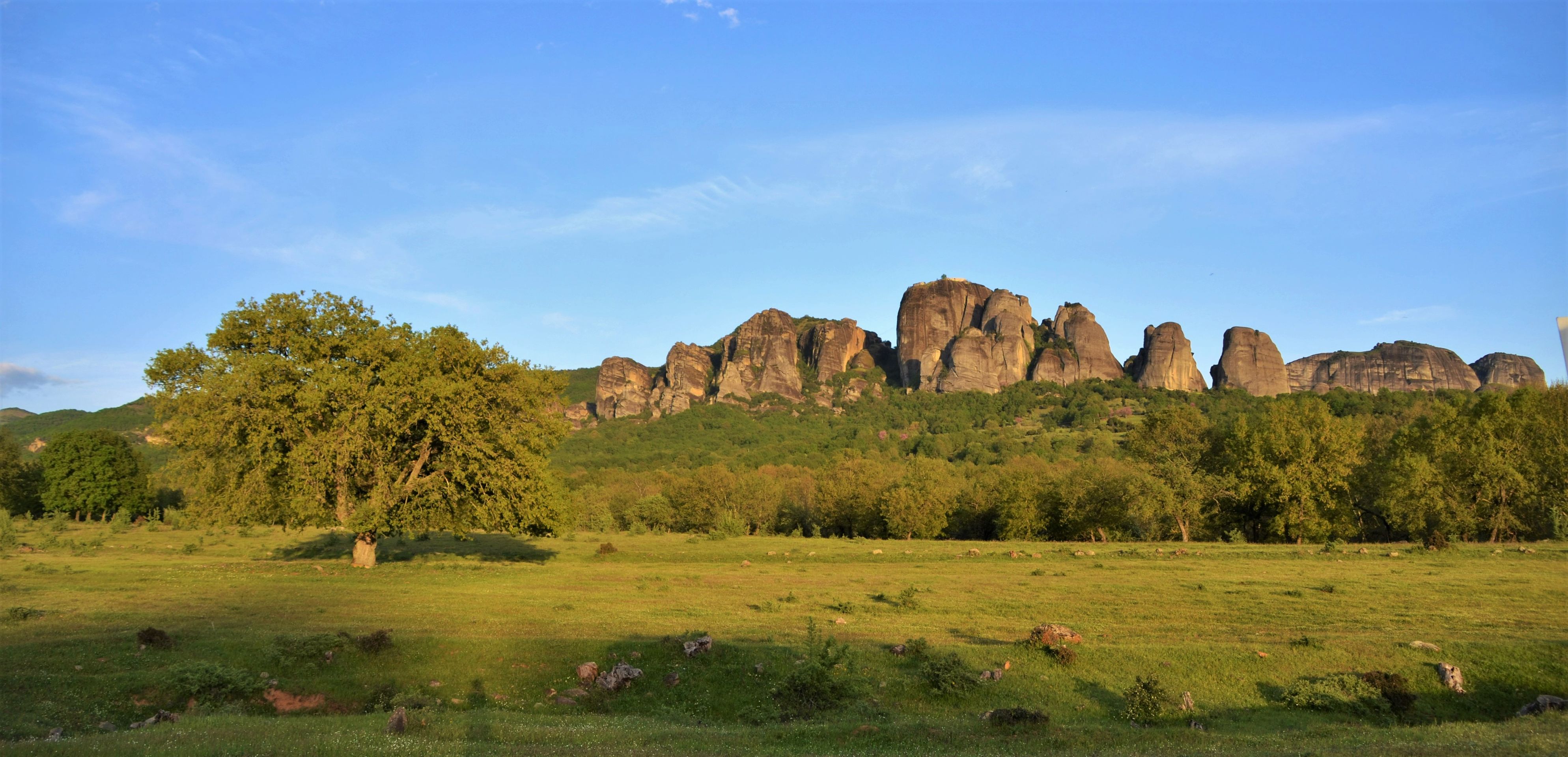
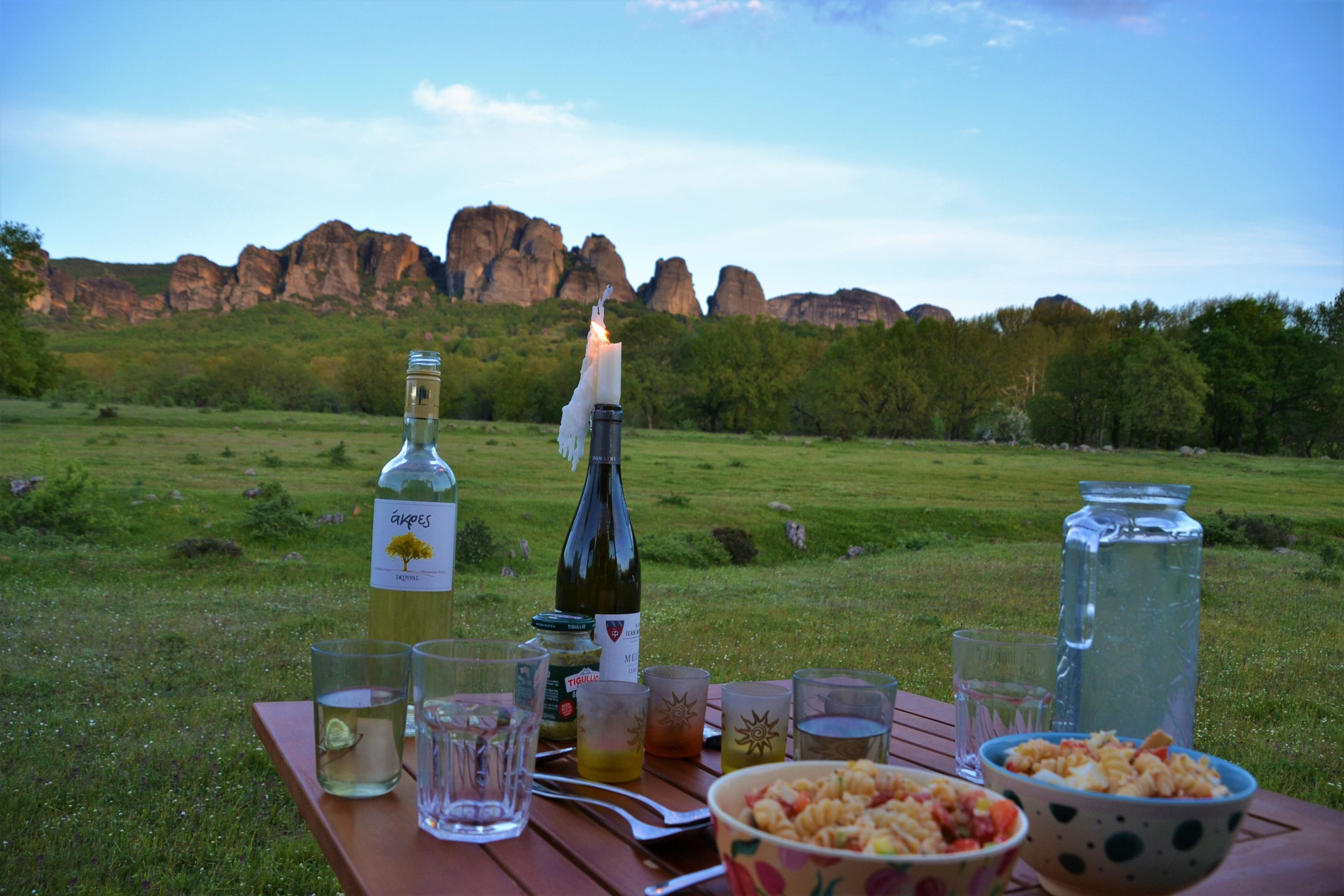




Day 192 - Total Tour 14,717 km
---- Subscribe ----
If you would like to subscribe to our blog, you can either sign up with Vakantio and click on subscribe or send us a message and we will add you to our own distribution list. We also appreciate feedback!
Email: querfeld2@gmail.com
Nyorera kune Newsletter
Pindura
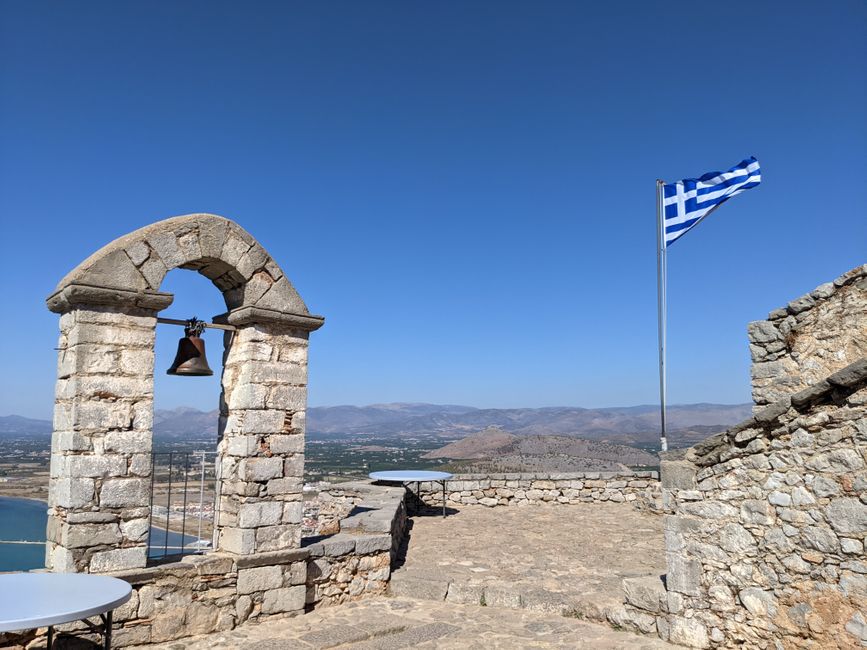
Mishumo yekufambisa Girisi
